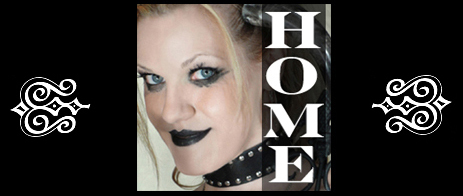
[Page Forty One]
[Below: WW2 era M1 gasmask. This thing is a beast...]
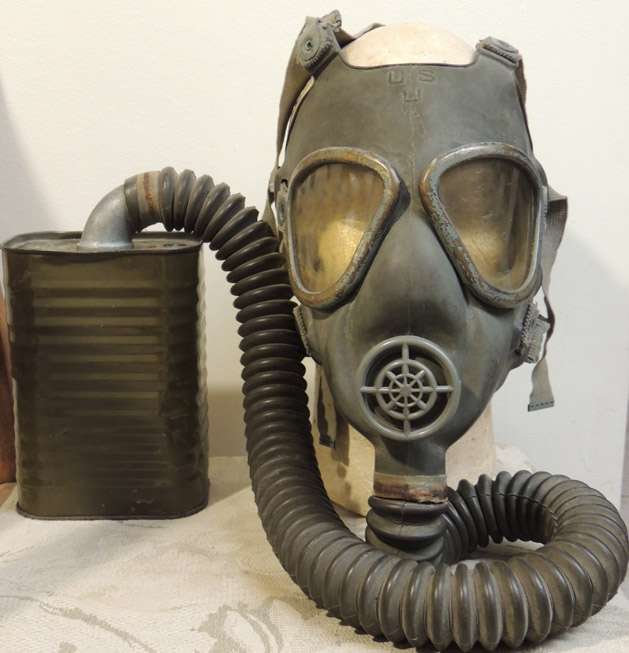
[Below: Side view.]
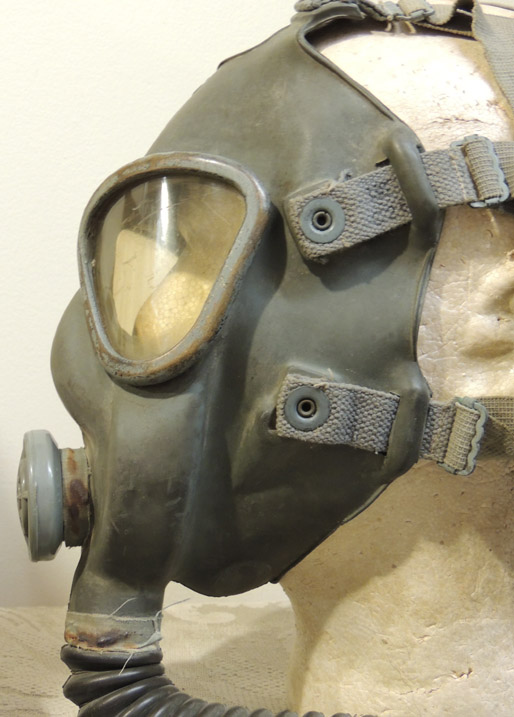
[Below: Top of filter canister.]
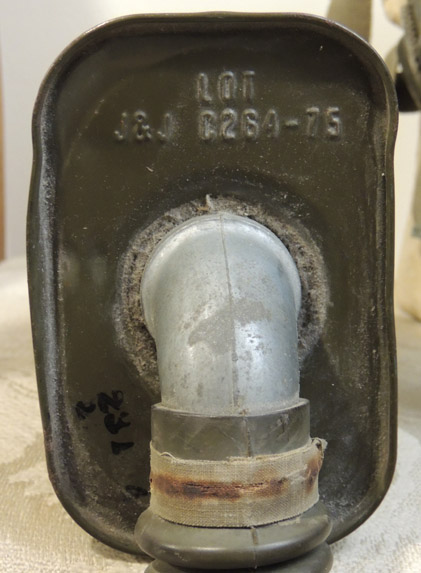
[Below: Stamp on side of mask. Dated '42'.]
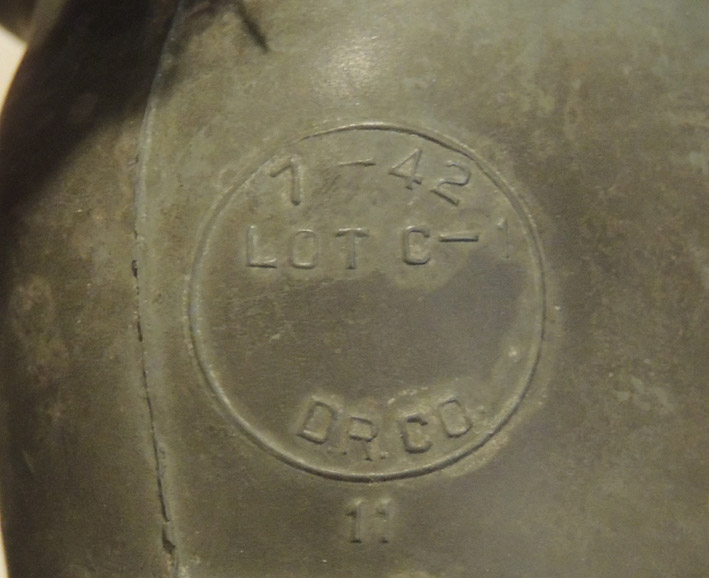
[Below: Gas mask bag. Its unique shape works excellent to house the mask and bulky filter.]
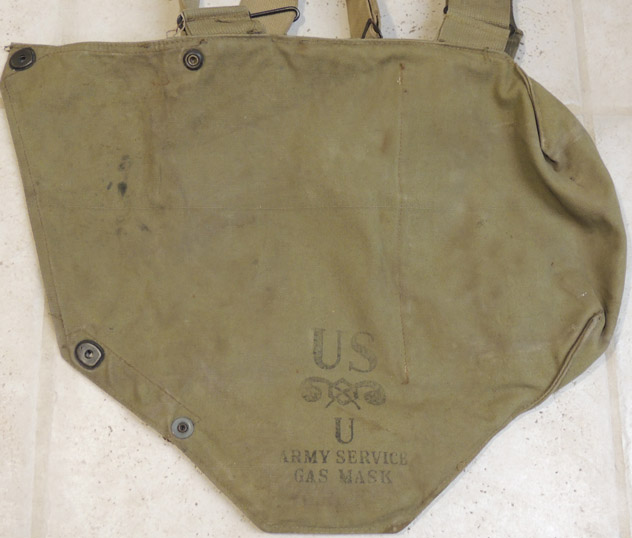
[Below: Close-up of ink stamp on bag.]

[Below: A mess of obliterated numbers!]
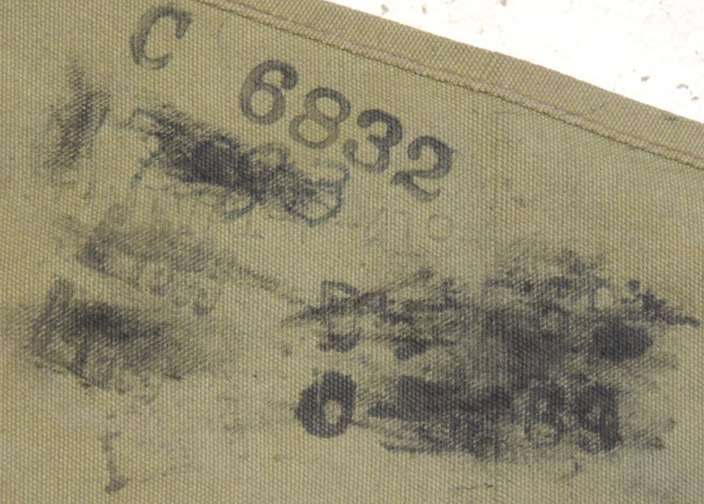
[Below: Cold War Russian gas mask.]
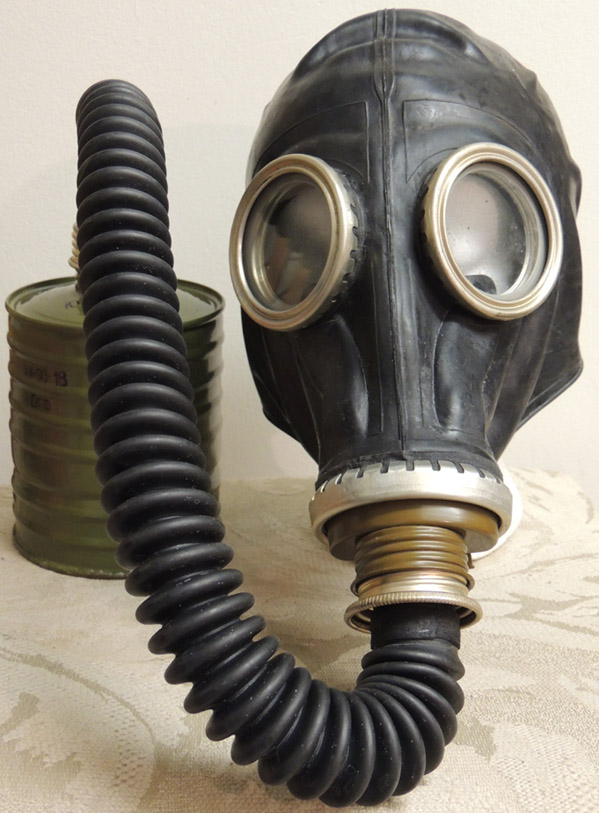
[Below: Side view. Gotta love the animal snout-like appearance of this one!]

[Below: Close-up of markings on gas mask.]
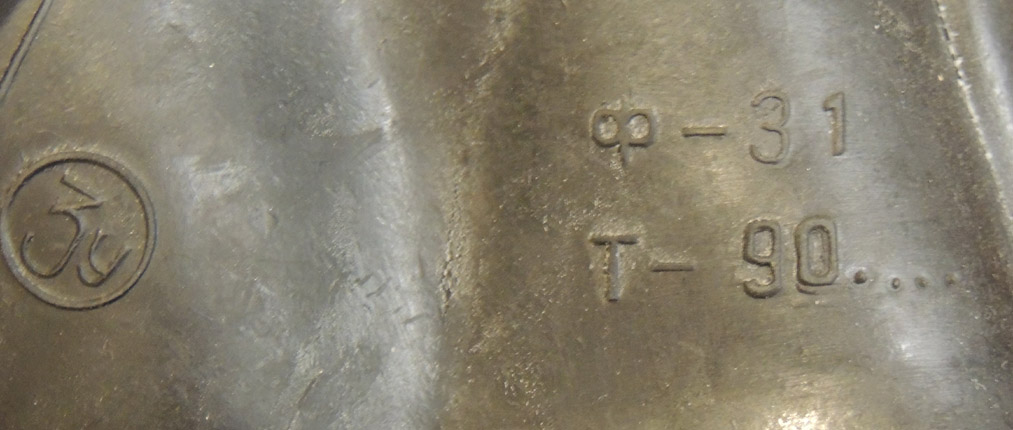
[Below: Close-up of markings on gas mask filter.]
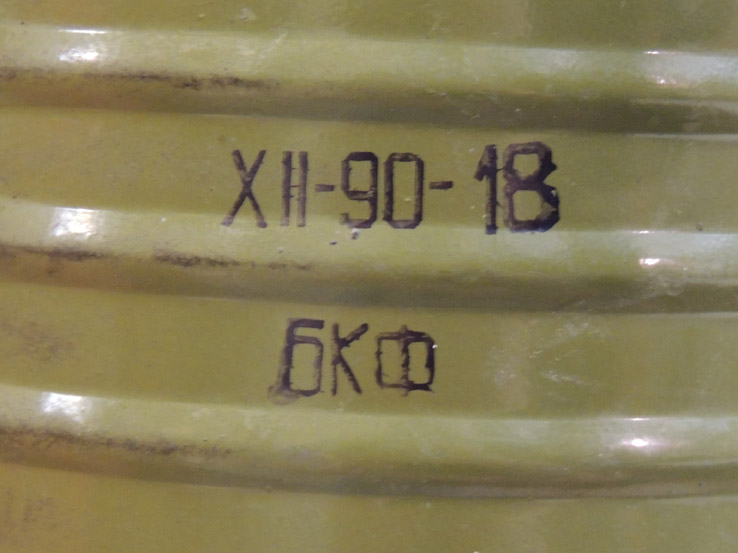
[Below: Gas mask canvas bag.]
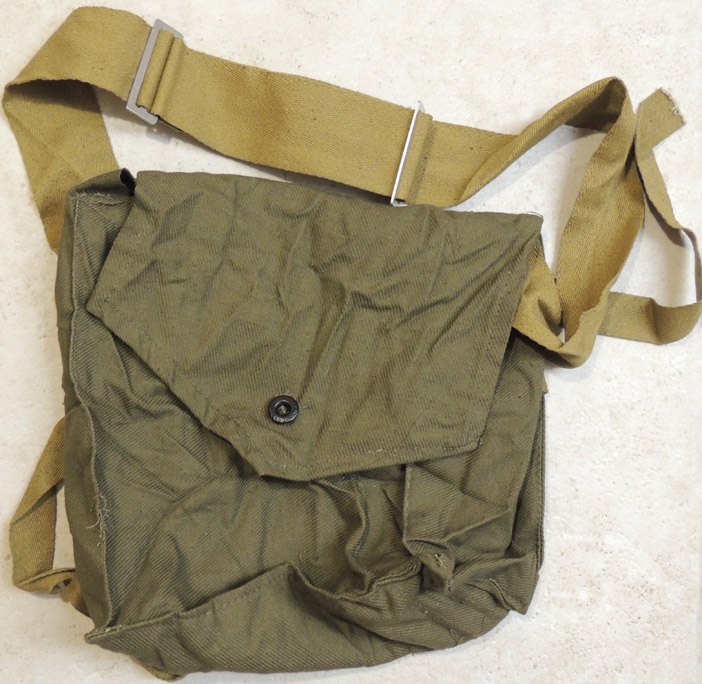
[Below: South Korean gas mask. Very high quality. One of the best masks I've ever handled. Rivals even the German 'Drager' gas mask.]
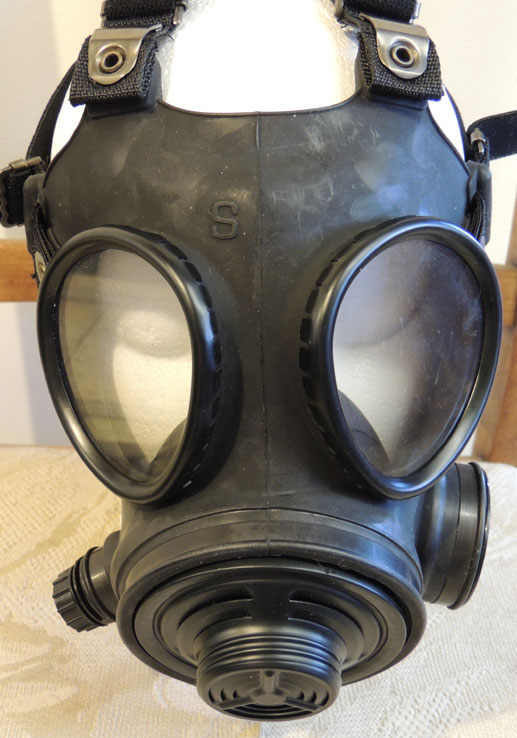
[Below: The gas mask filter is kept in a frame which fits inside the mask.]

[Below: Heavy canvas of a very high quality.]
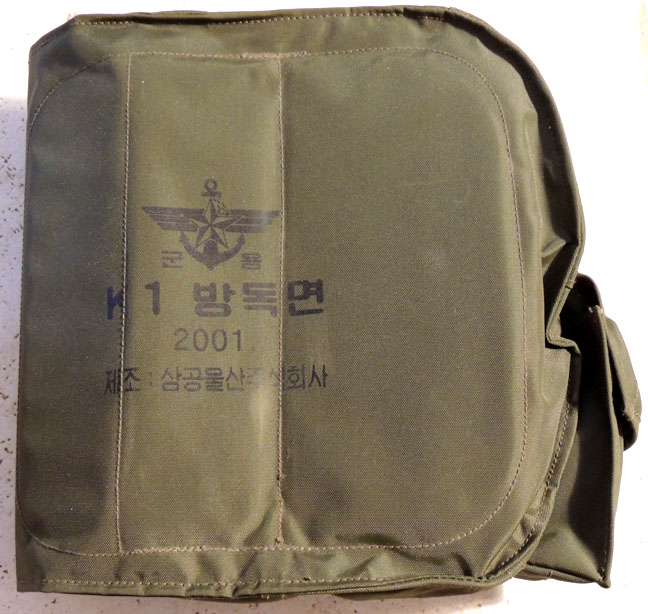
[Below: Plastic bag which the mask is sealed in.]
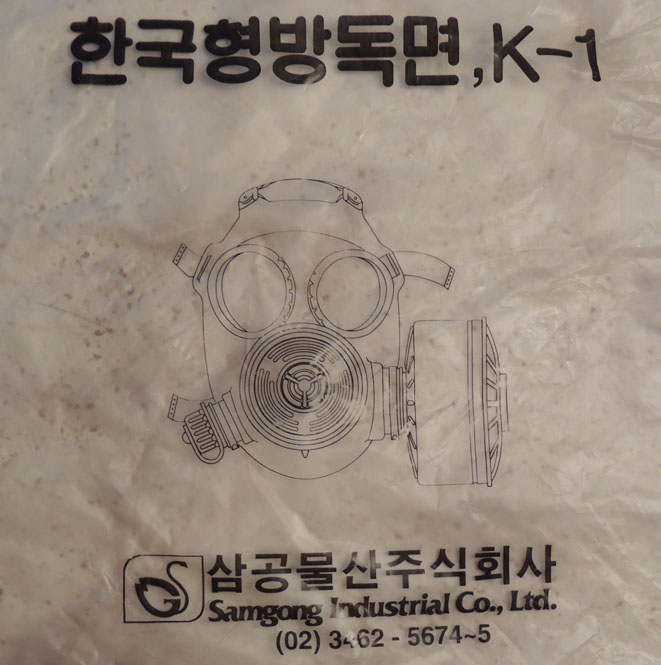
[Below: Chemical hood that fits mask and is kept folded inside bag pocket.]
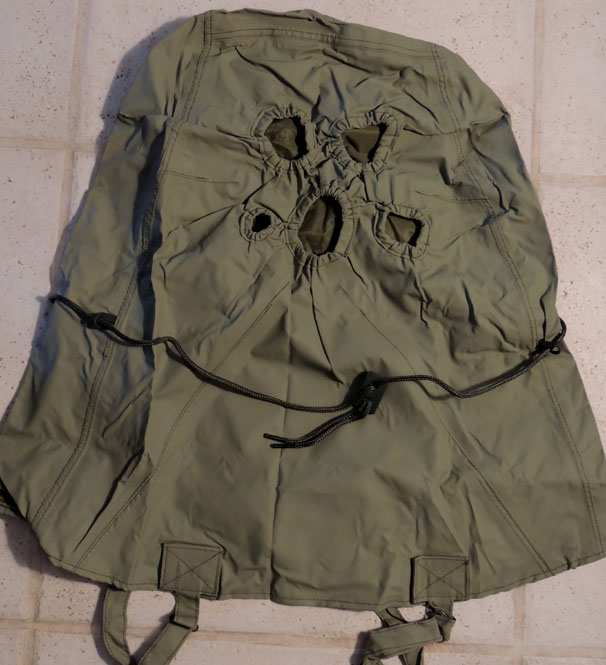
[Below: Drinking attachment with straw that is also kept inside bag pocket. This enables the wearer to drink while wearing the mask.]
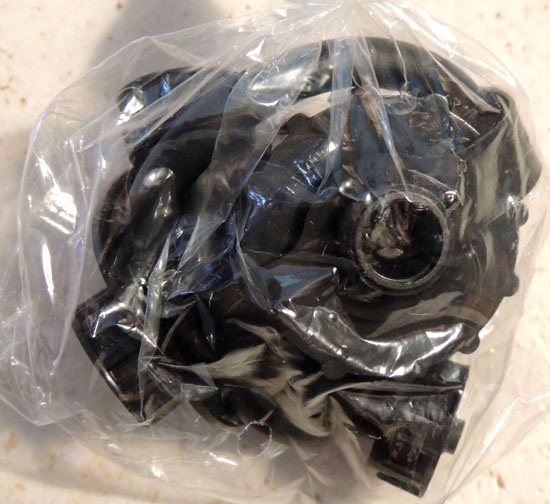
[Below: Plastic bag in a plastic bag!]
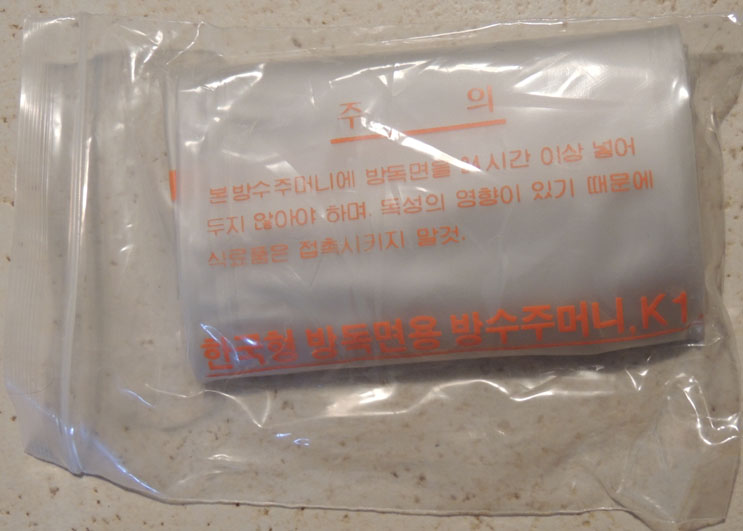
[Below: Small container that contains a lens cloth with an anti-fogging agent.]
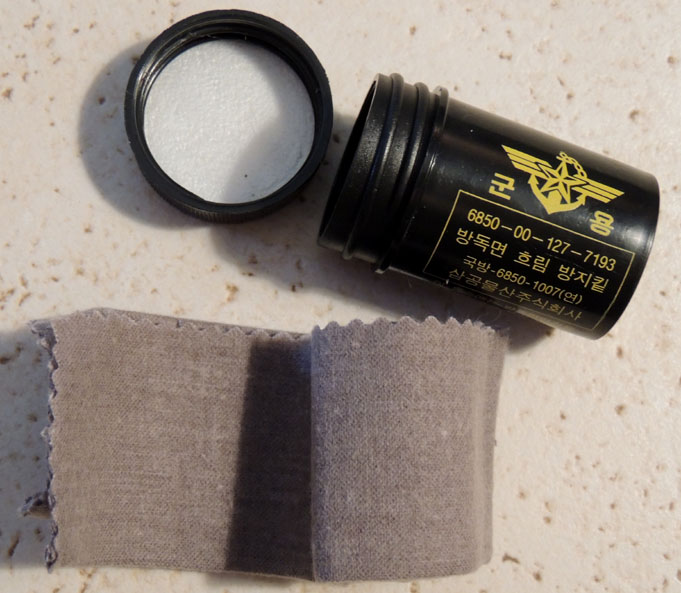
[Below: Gas mask manual.]
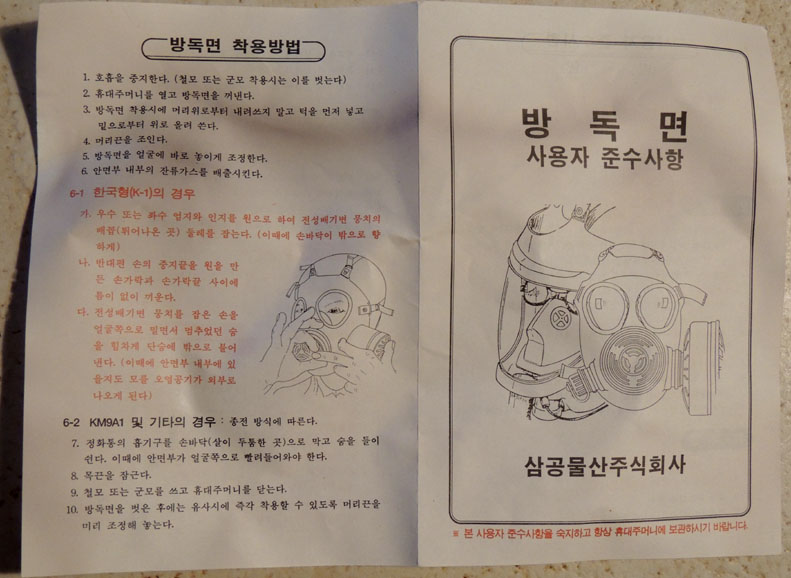
[Below: M9A1 gas mask tin (front). The M9 gas mask was first adopted in 1947 and was an improved replacement for the M5 gas mask. It boasted improvements to the facepiece design and utilized improved synthetic molded rubber composition that stayed flexible in cold temperatures. Over 3 million M9 masks were manufactured until it was retired from service in 1959.]
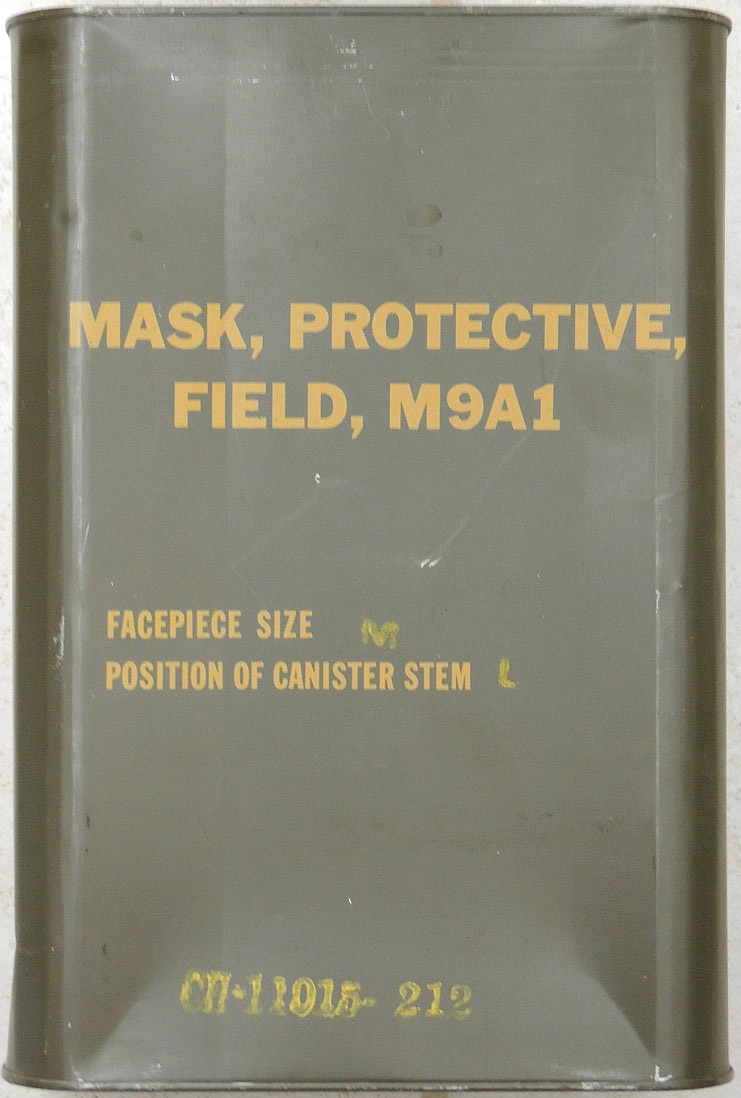
[Below: M9A1 gas mask tin (side view).]
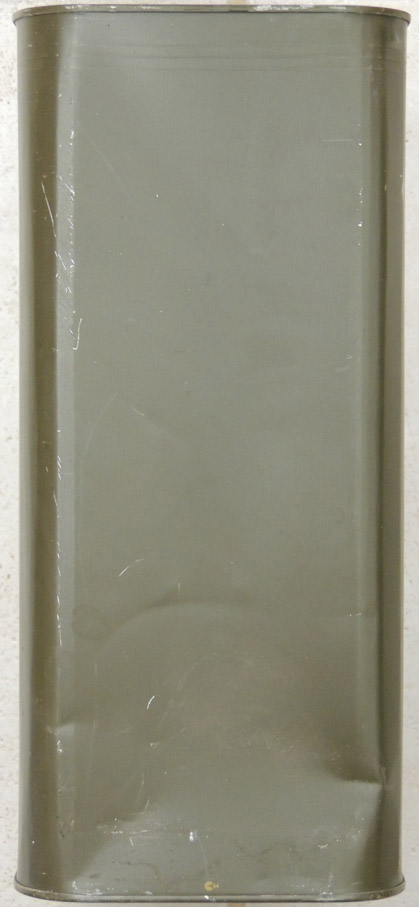
[Below: M9A1 gas mask tin (rear view).]
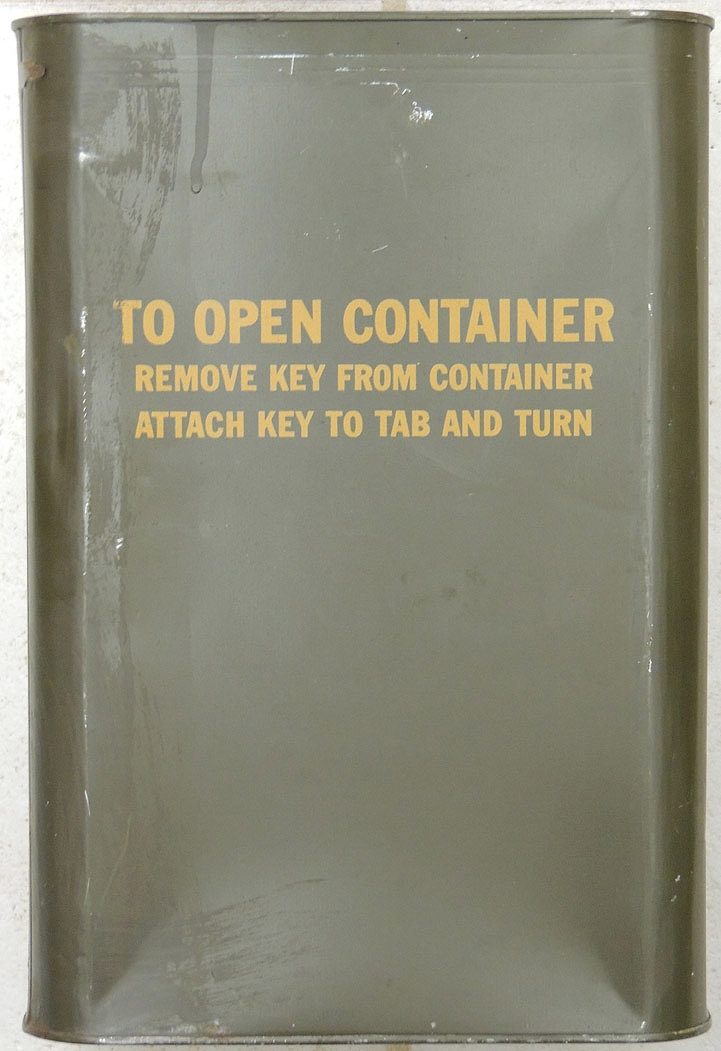
[Below: M9A1 gas mask tin (top view).]
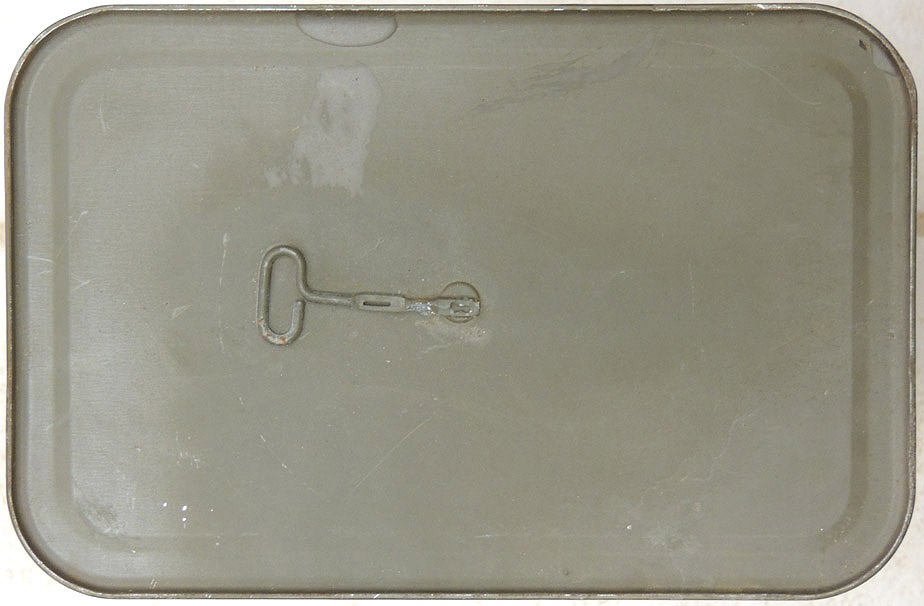
[Below: Stock photo of opened tin.]

[Below: M11 gas mask filter can (front view).]

[Below: M11 gas mask filter can (side view).]
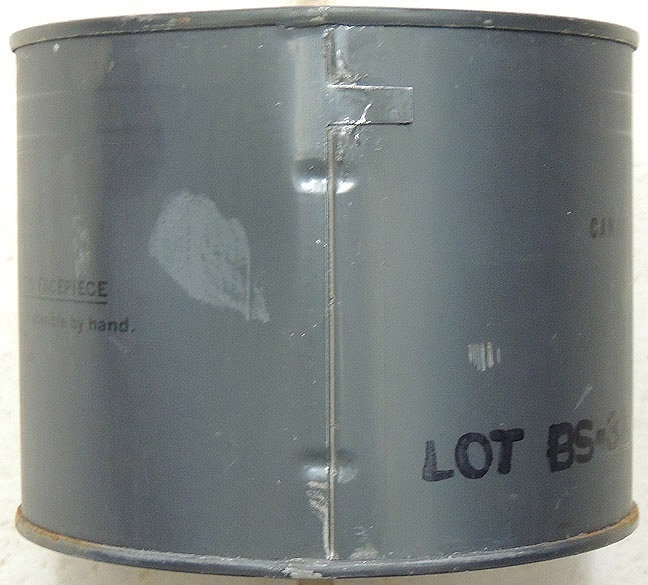
[Below: M11 gas mask filter can (back view).]
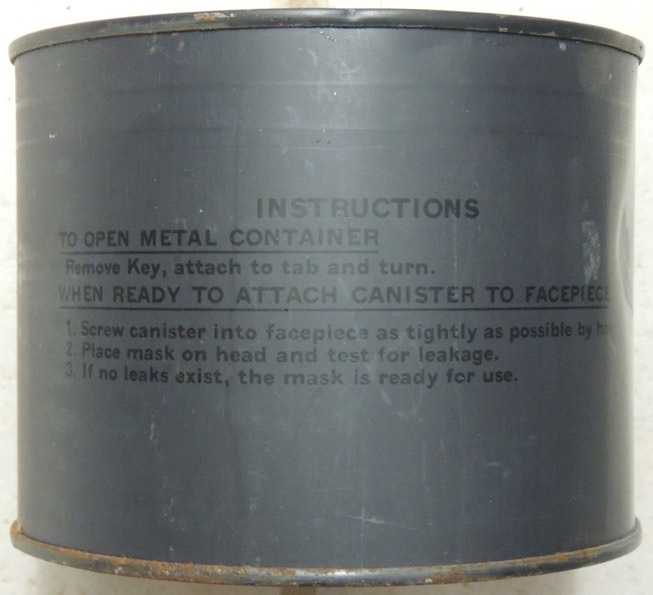
[Below: M11 gas mask filter can (top view).]
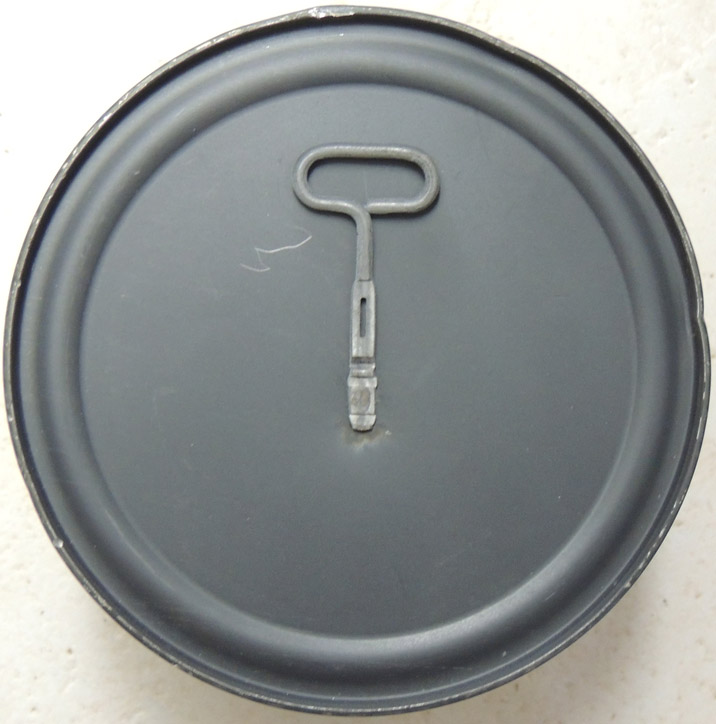
[Below: Stock photo of opened can.]
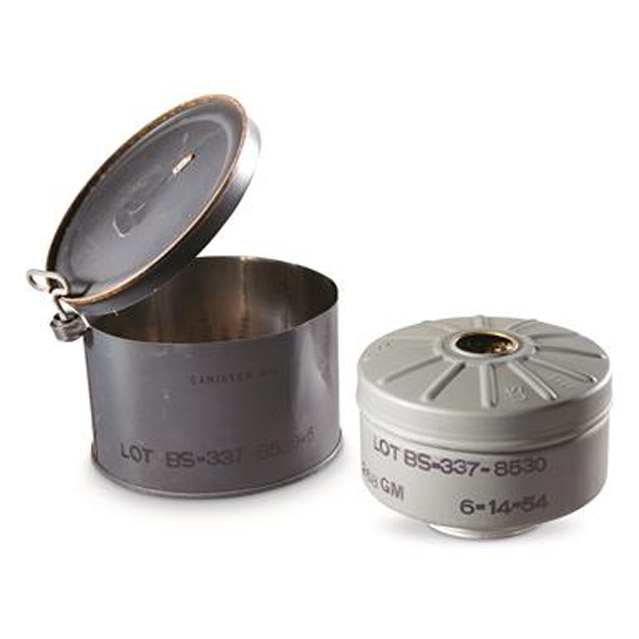
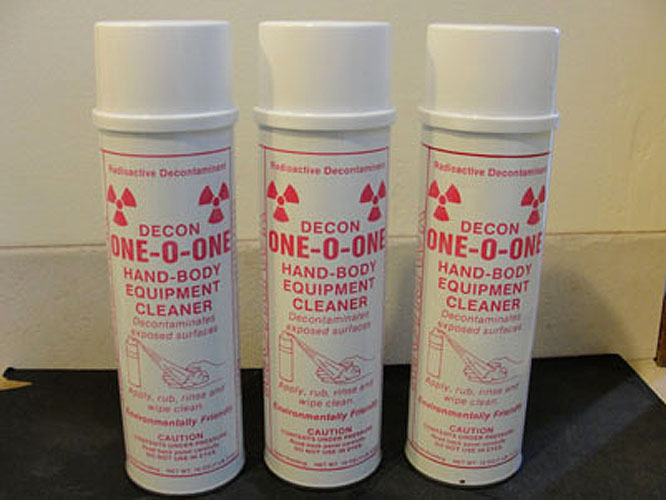
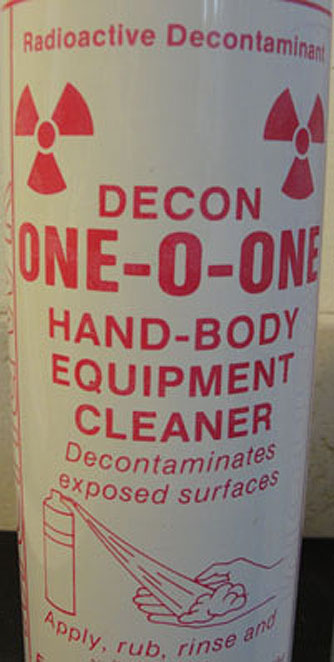
[Decontamination foam spray. The fallout of a nuclear weapon creates particles of matter which bond like glue to the skin and are very hard to remove. This product is meant to help in its removal.]
NBC relics of the Cold War
[#409]
[Note: The following items are a mix of American and British. NBC stands for Nuclear-Biological-Chemical, of which these products were meant to protect against.]
[This is a British NBC body bag. Even the dead could be infected by NBC contamination. Think about shipping Pvt. John Doe home contaminated with radiation or some chemical or biological weapon.]
[An activated charcoal NBC suit. Basically a pair of camouflaged pants and overshirt lined with a layer of charcoal. This is American I believe.]
[Something tells me this isn't the same 'Cadillac' as the luxury car maker!]
[Another activated charcoal NBC suit, this time by a different maker. Basically a pair of camouflaged pants and overshirt lined with a layer of charcoal. This I also believe to be American, if you really give a shit!]
[The 'Champion' of NBC protective garments!]
[British NBC smock and pants from 1984/85.]
[NBC flyer's coverall - January 1978.]
[NBC gloves made in 1973.]
[NBC boot covers from the 1990s.]
[Below: NBC boot covers from the 1970s.]
[Above: made to slip over a combat boot]
[Above: bottom of boot]
[Above: close-up of print]
[Below: This NBC product, from Switzerland, but made in Germany, folds out to be a poncho.]
[Below: Side view.]
[Below: This is a metal tube contained chalk-like sticks called a 'vesicant' It says:
CRAYON, VESICANT DETECTOR, M7A1
[Below: Metal vesicant tubes...]
[Below: Metal vesicant tubes...]
[Below: Metal vesicant tubes...]
[Below: Metal vesicant tubes...]
[Below: The chalk-like sticks, or 'vesicant' say:
CRAYON, VESICANT DETECTOR, M7A1
[Below: Chalk-like sticks called a 'vesicant'.]
[Below: Chalk-like sticks called a 'vesicant'.]
[Below: Here is an American WWII era gas mask/gas attack information card.]
[Below: Here is one hell of a book title for you:
'A General Account of the Development of
This is from August 1945 and is 182 pages.]
[Below: First page.]
[Below: Random pages.]
[Below: Kinda ironic someone was using this as a book mark in a nuclear weapons book. 'I'm the bright spot in your cost of living'.]
[Class dismissed. Now you know the ABCs of NBC!]
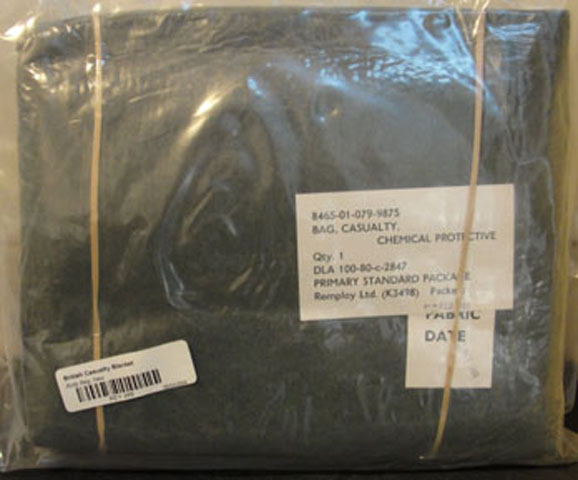
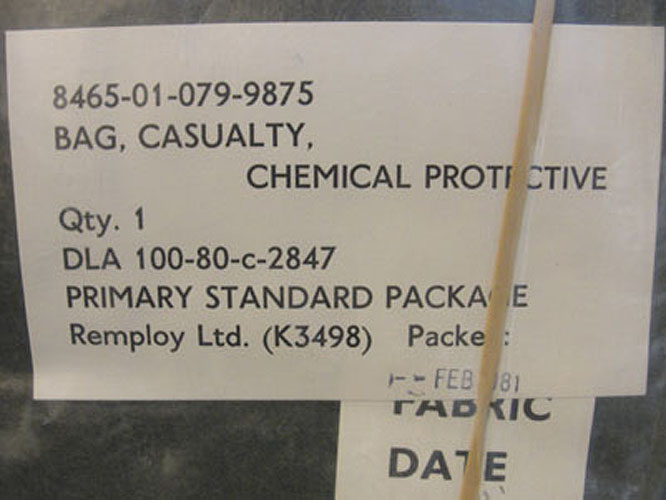
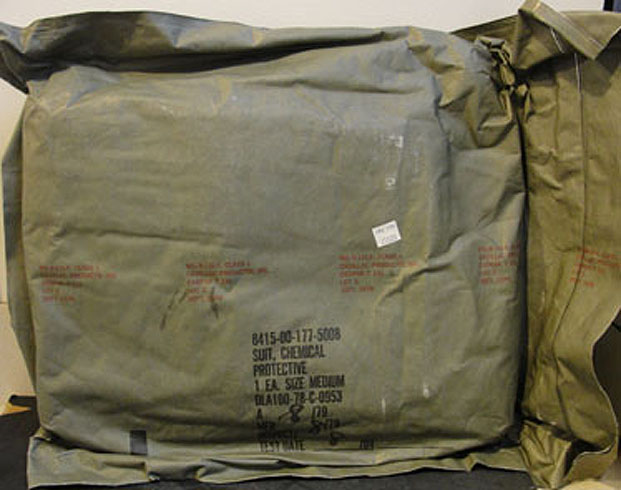

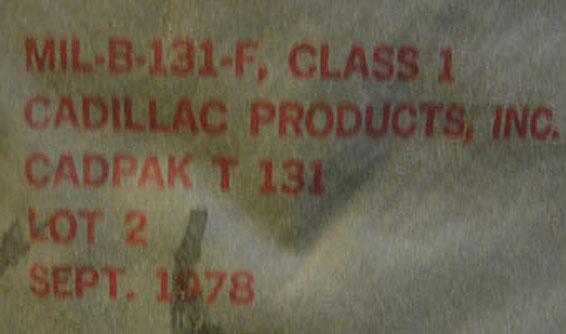
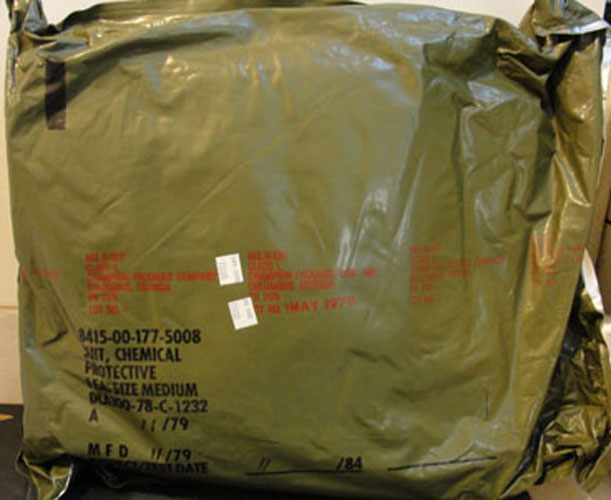
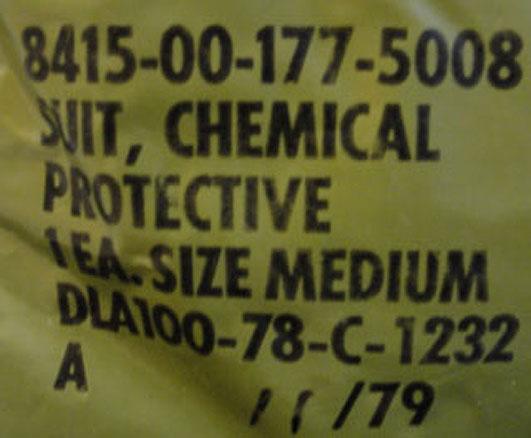
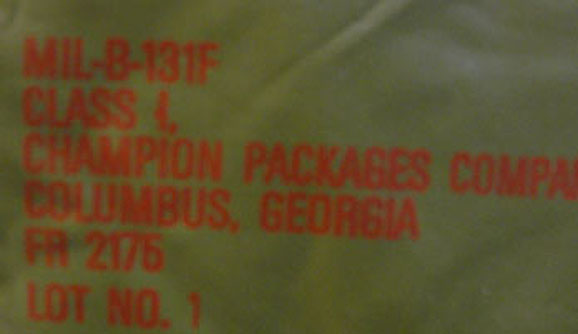

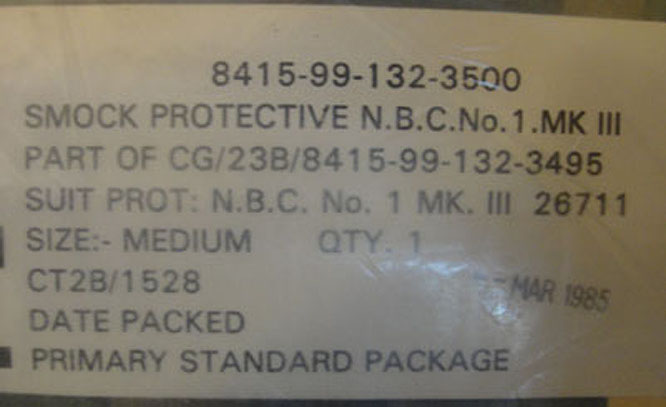
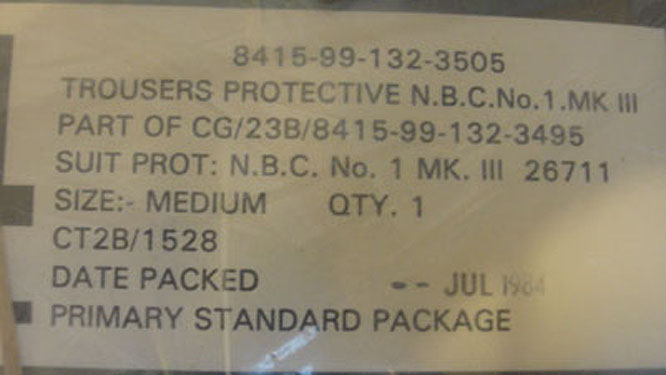
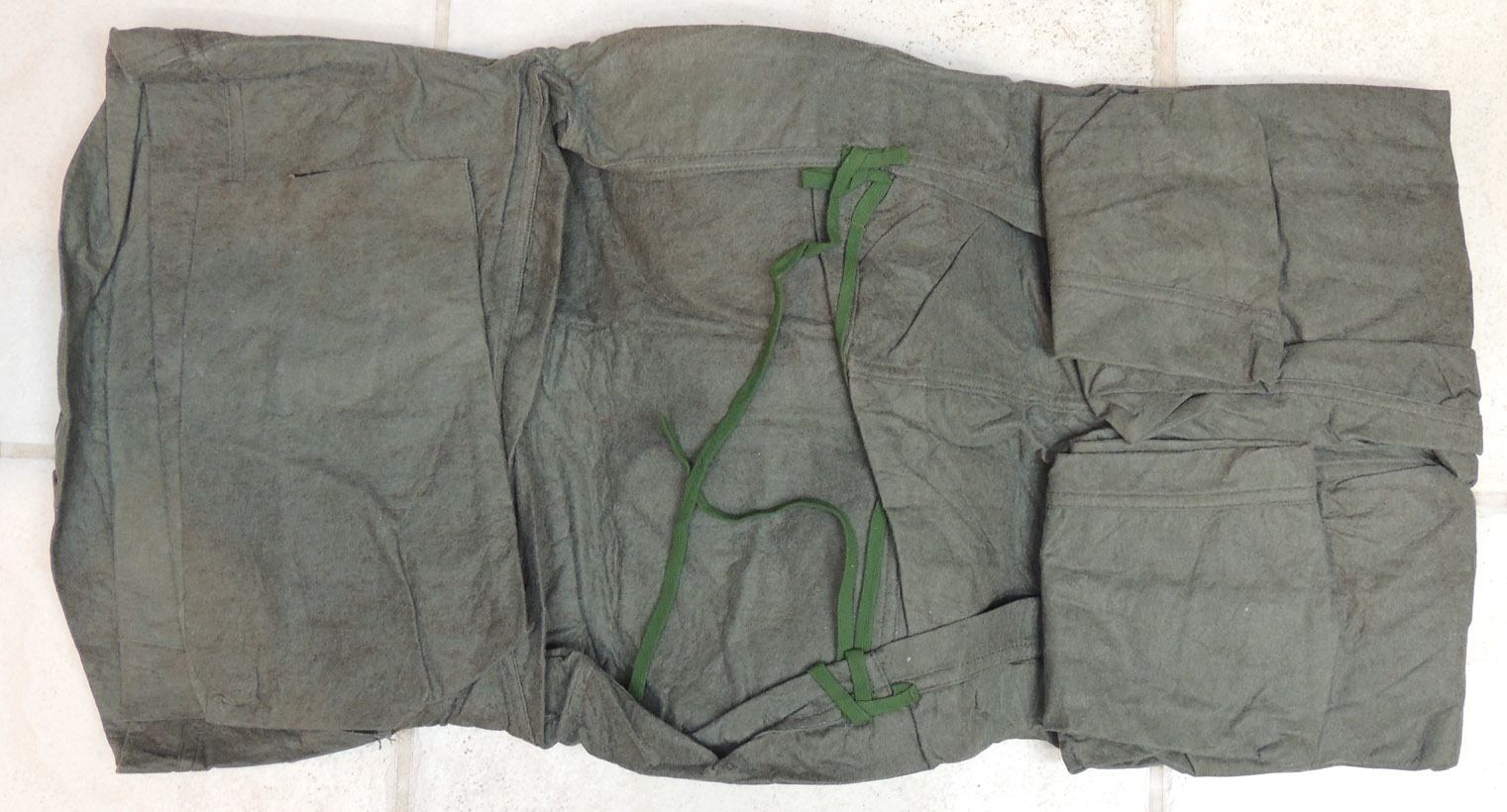
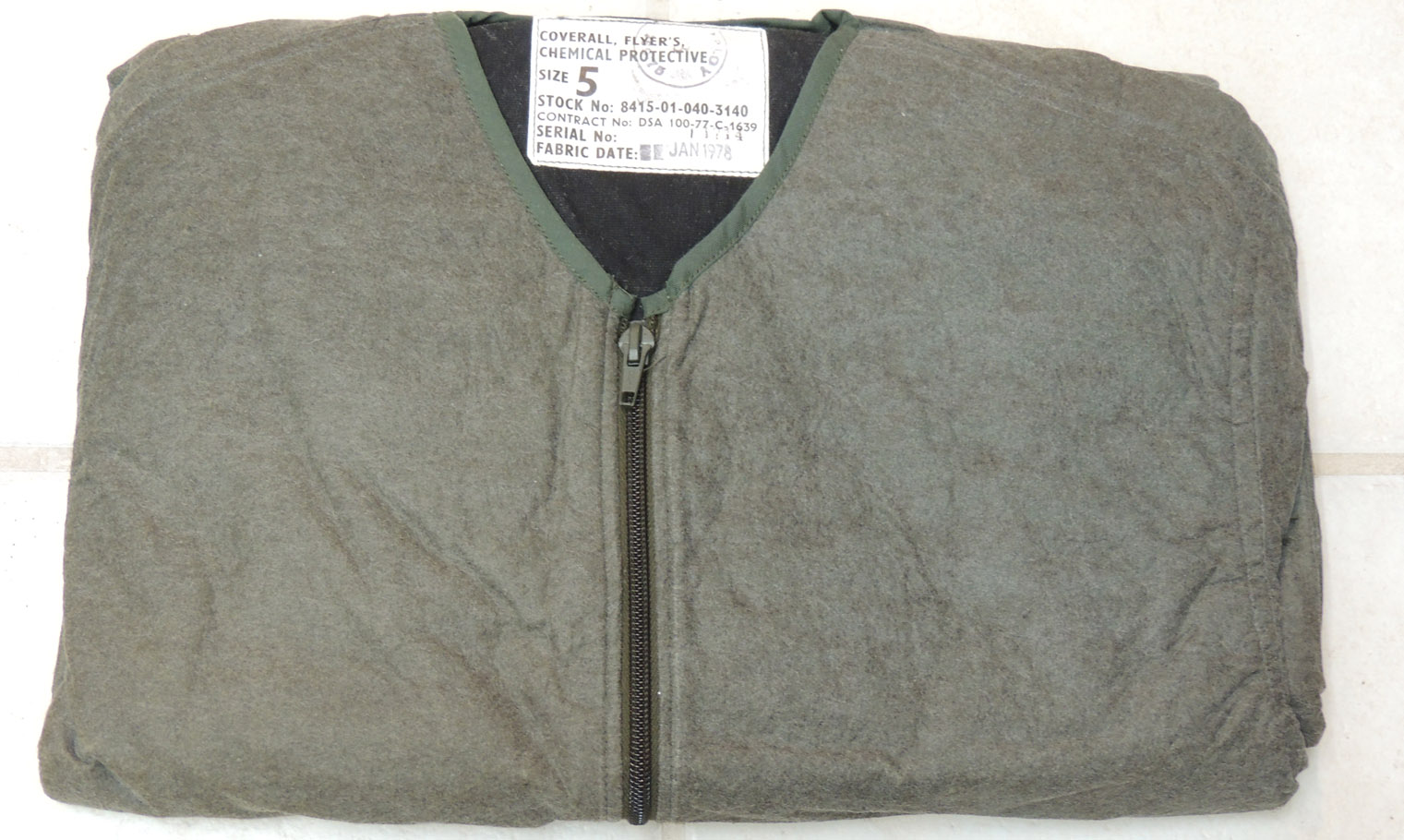
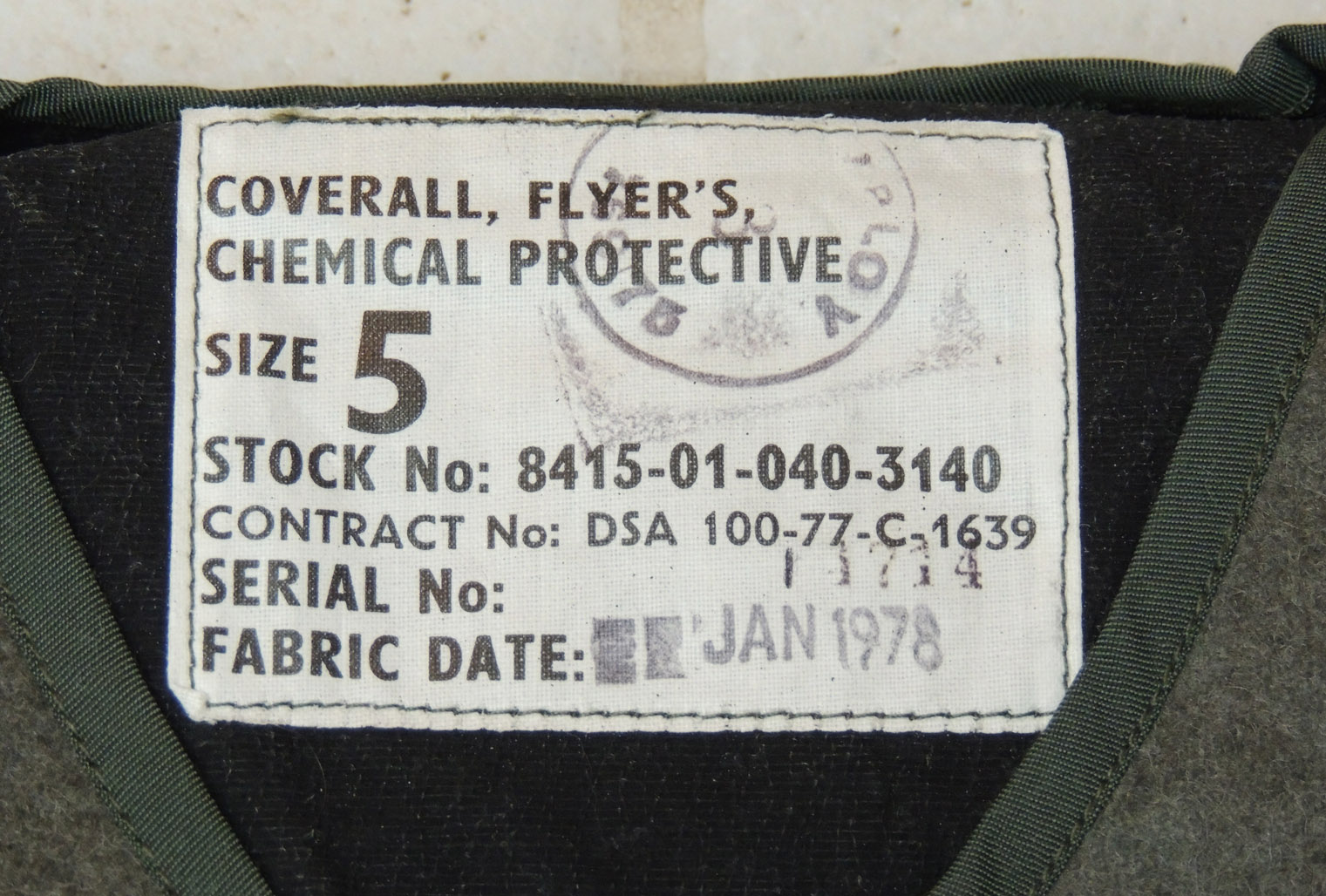
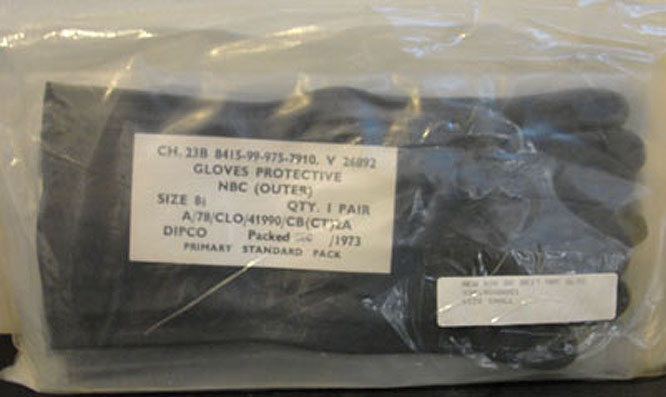
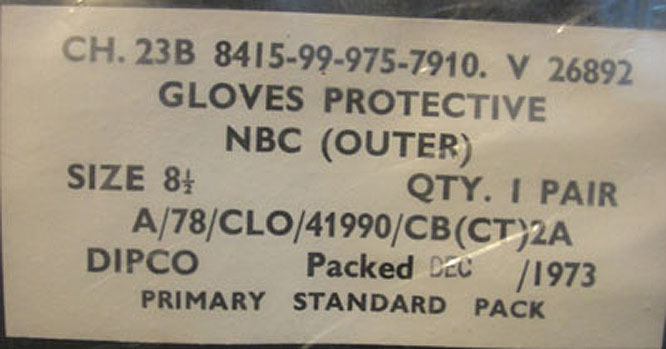
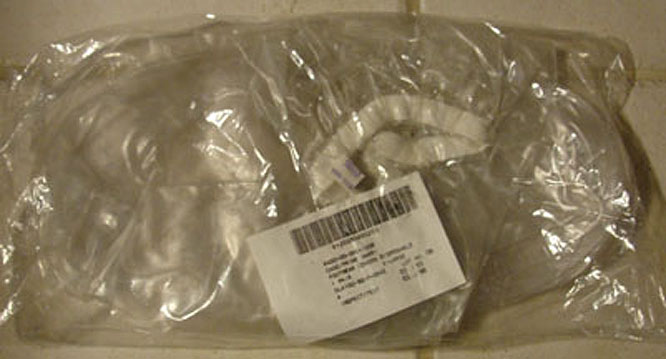
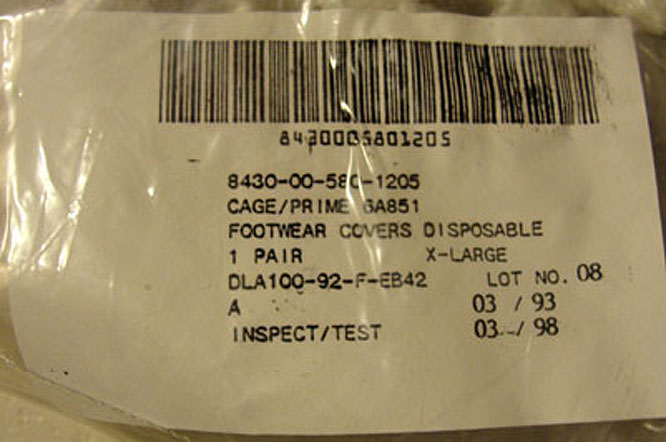
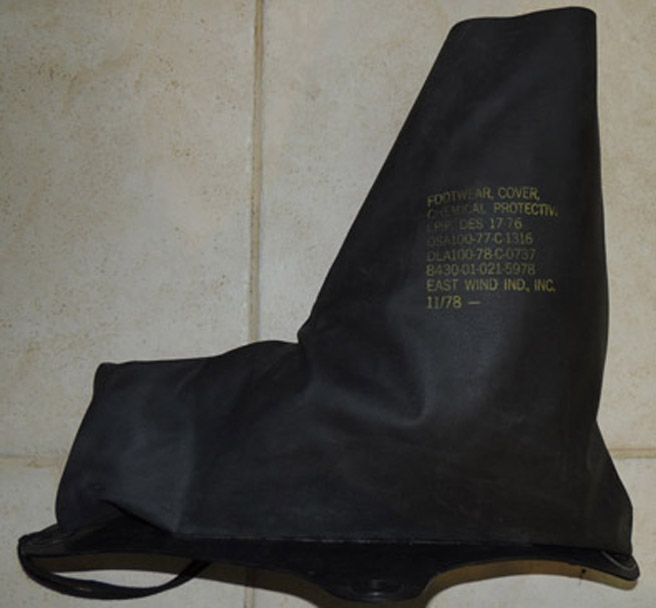
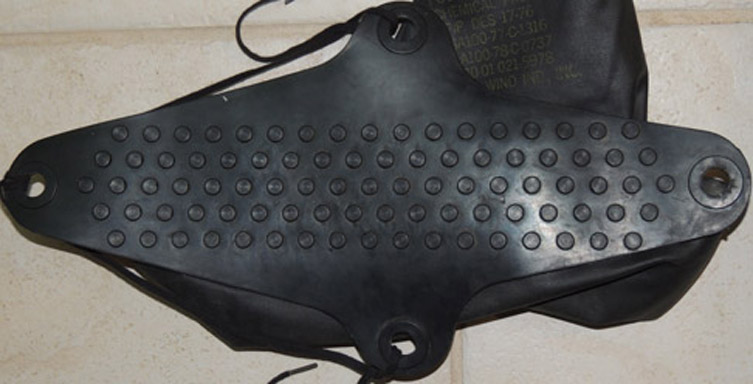
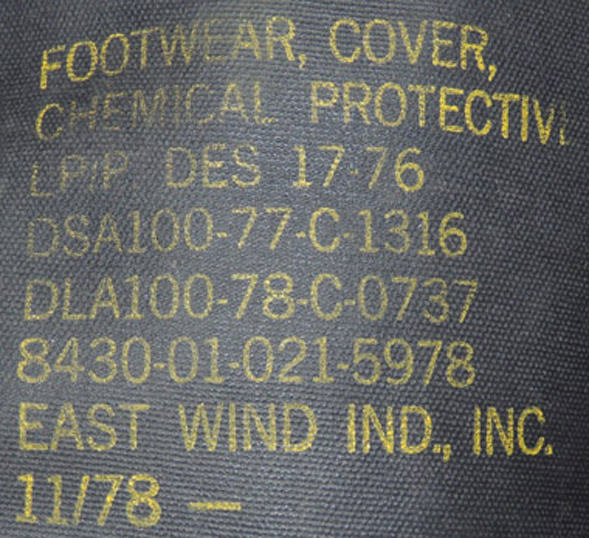
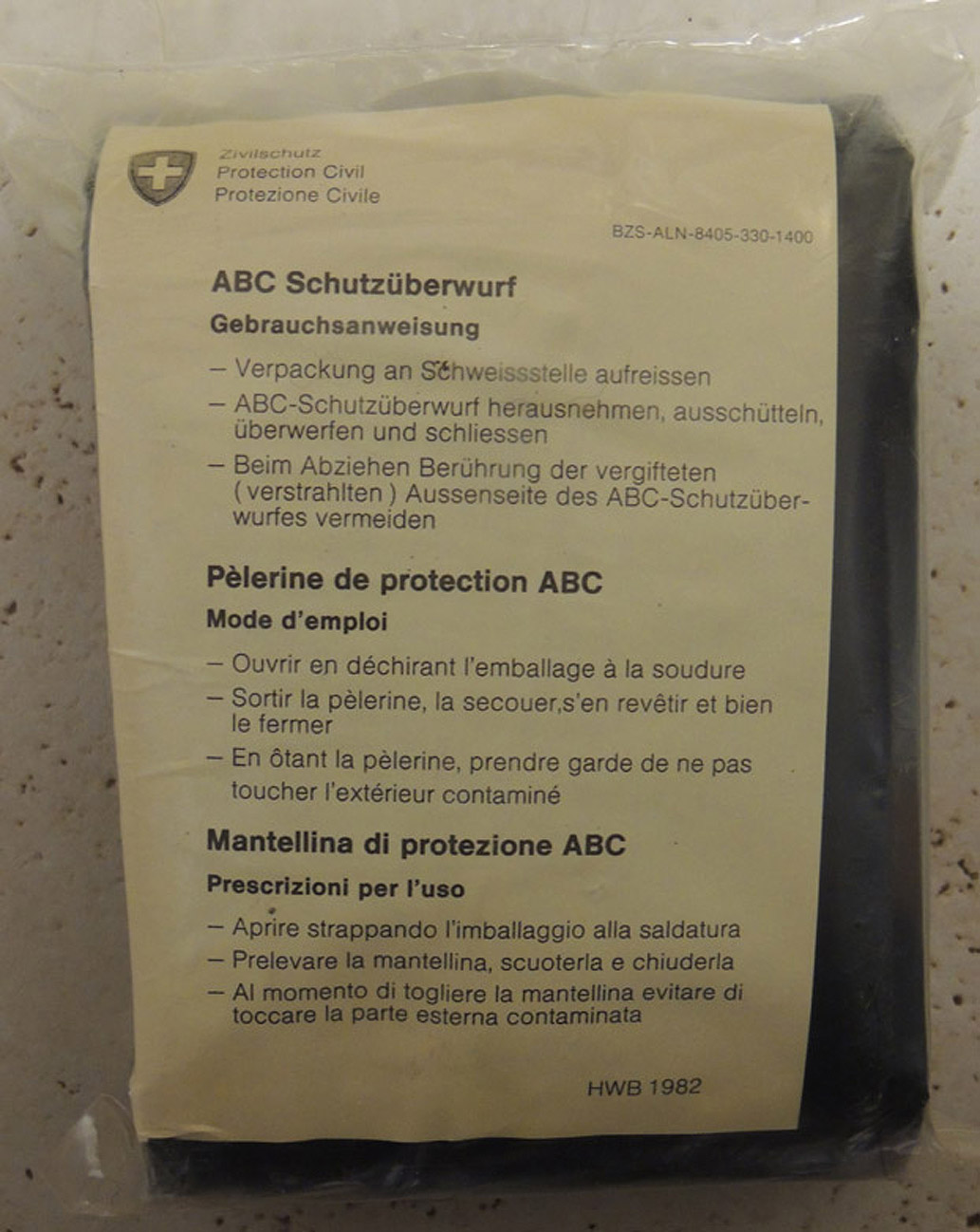
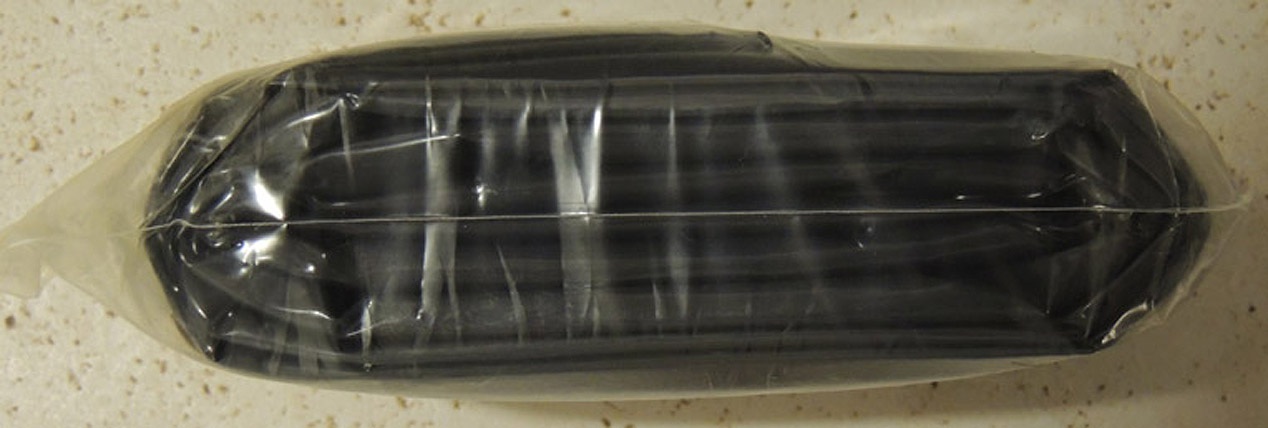
Surface contamination by liquid H or L (but not by HN) may be detected by means of the Vesicant Detector Crayon.
Best results are obtained less than 2 hours after contamination. To make test, remove a crayon from the Black Metal Vial and use one of the following methods:
(a) If surface is firm, rub crayon directly on surface. If crayon mark changes to blue within 5 minutes, surface is heavily contaminated.
(b) Mark one side of white paper with crayon, hold marked side directly against surface for 5 minutes. If crayon mark changes to blue, surface is heavily contaminated.
(c) Scrape or crumble crayon into a powder and dust on surface. A blue color, occuring within 5 minutes indicates heavy contamination.
Before replacing crayon into vial remove any portion which may have become contaminated and turned blue.]
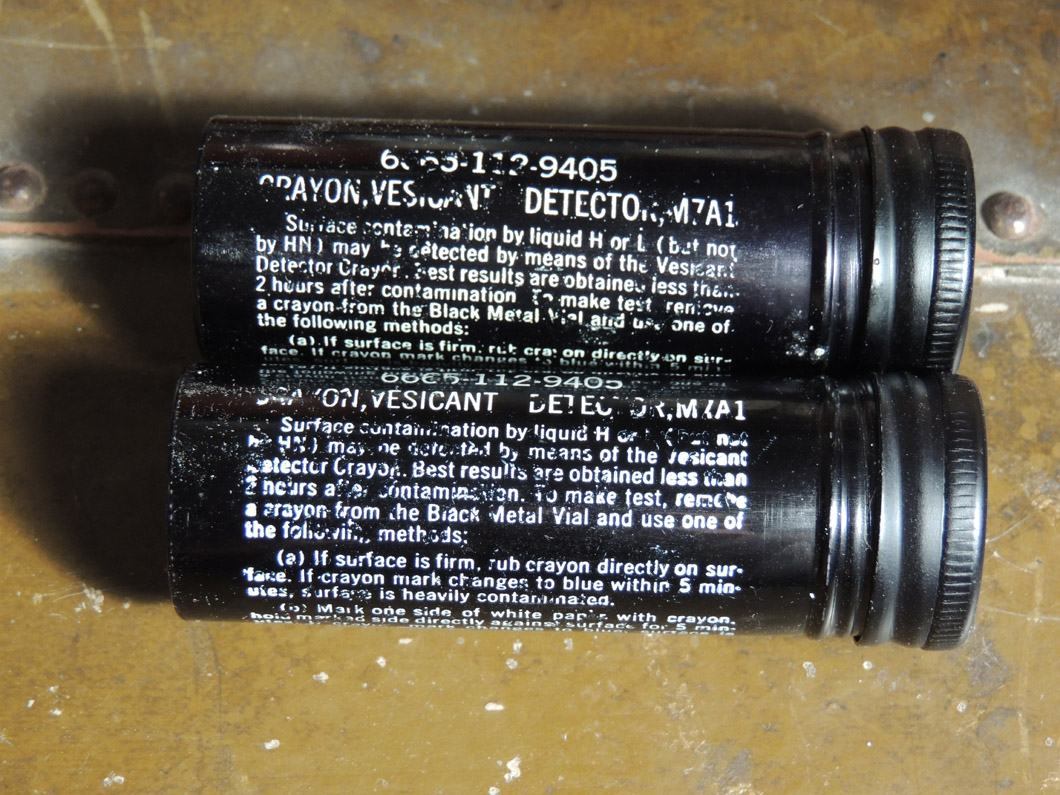
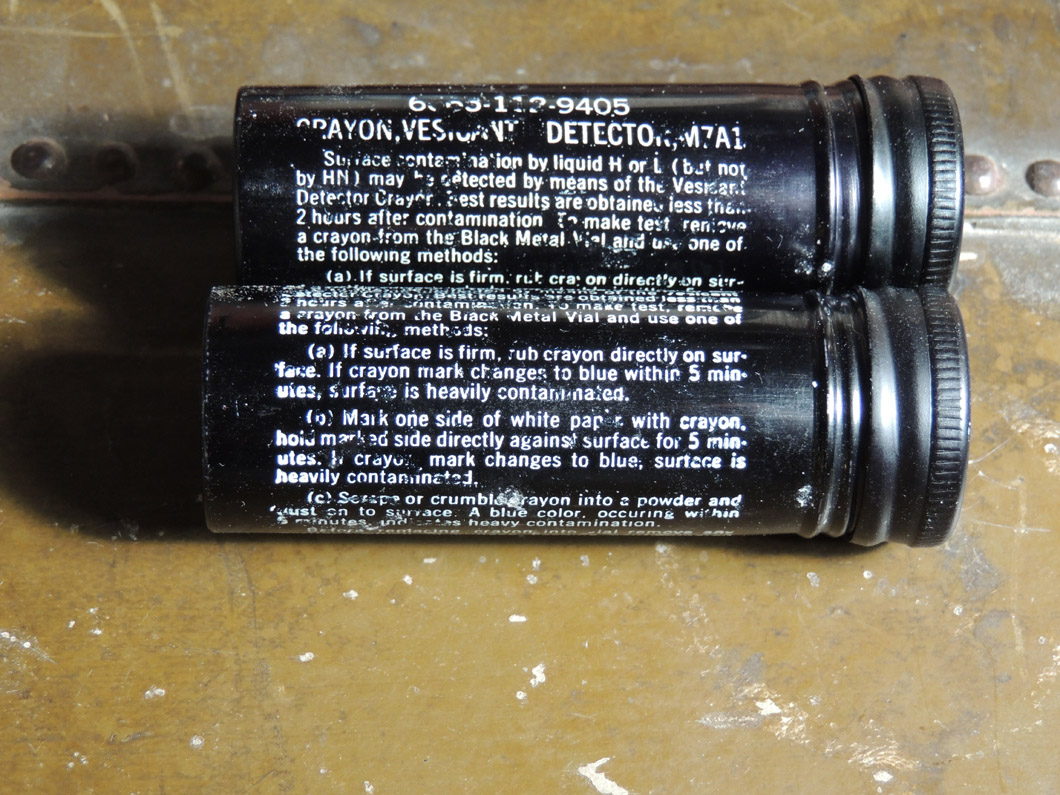
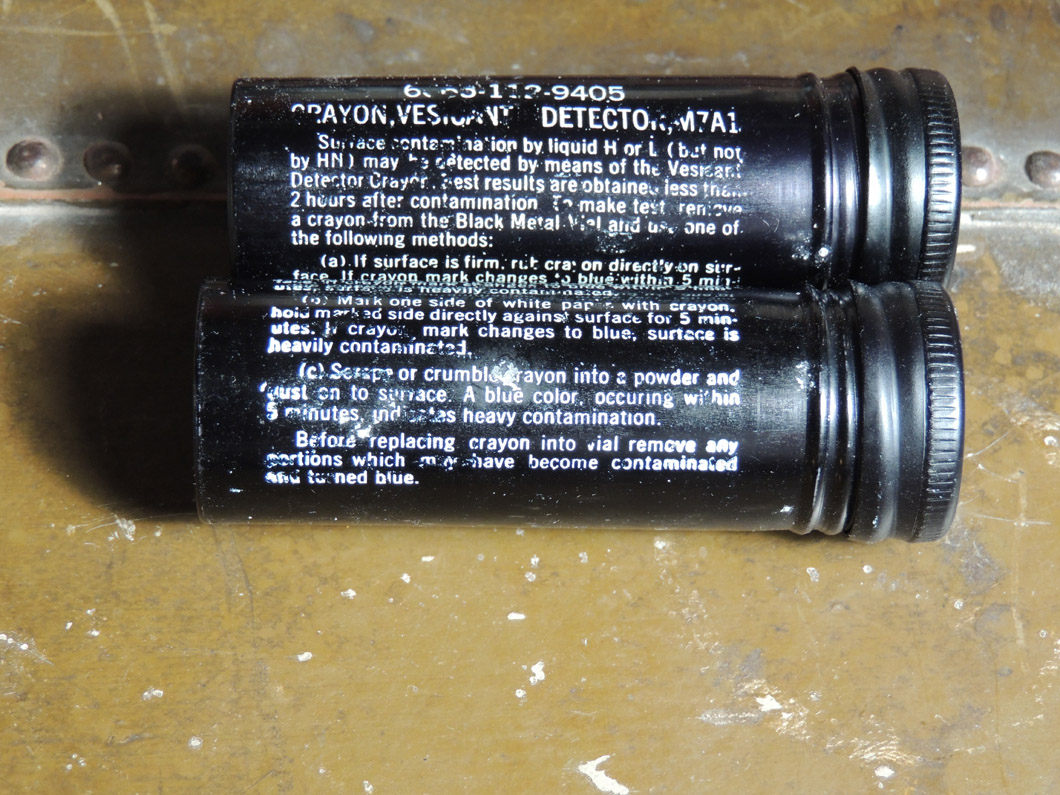
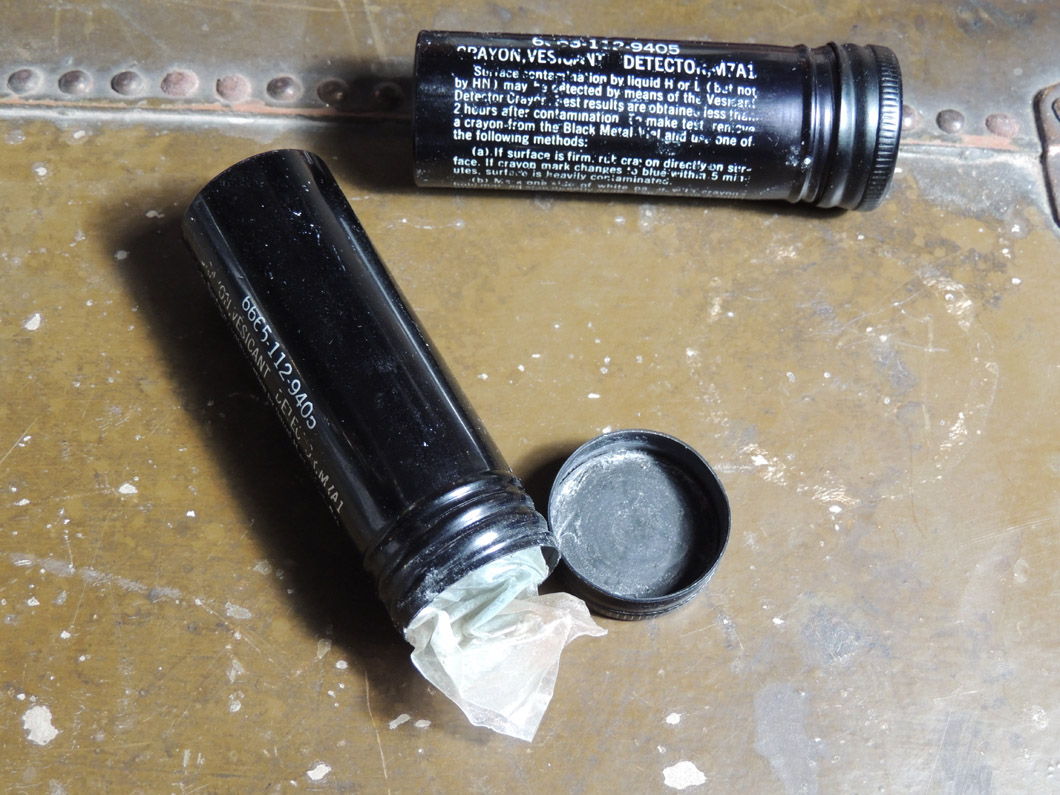

(1) For form surface: rub directly on surface.
(2) For soft surface:
(a) Hold crayon-marked side of white paper against surface for 5 minutes, or
(b) Pulverize and dust powder on surface.
Blue color within 5 minutes - surface is contaminated with liquid H or L (but not HN).
Manufacturer
CHEMICAL COMPOUNDING CORPORATION]
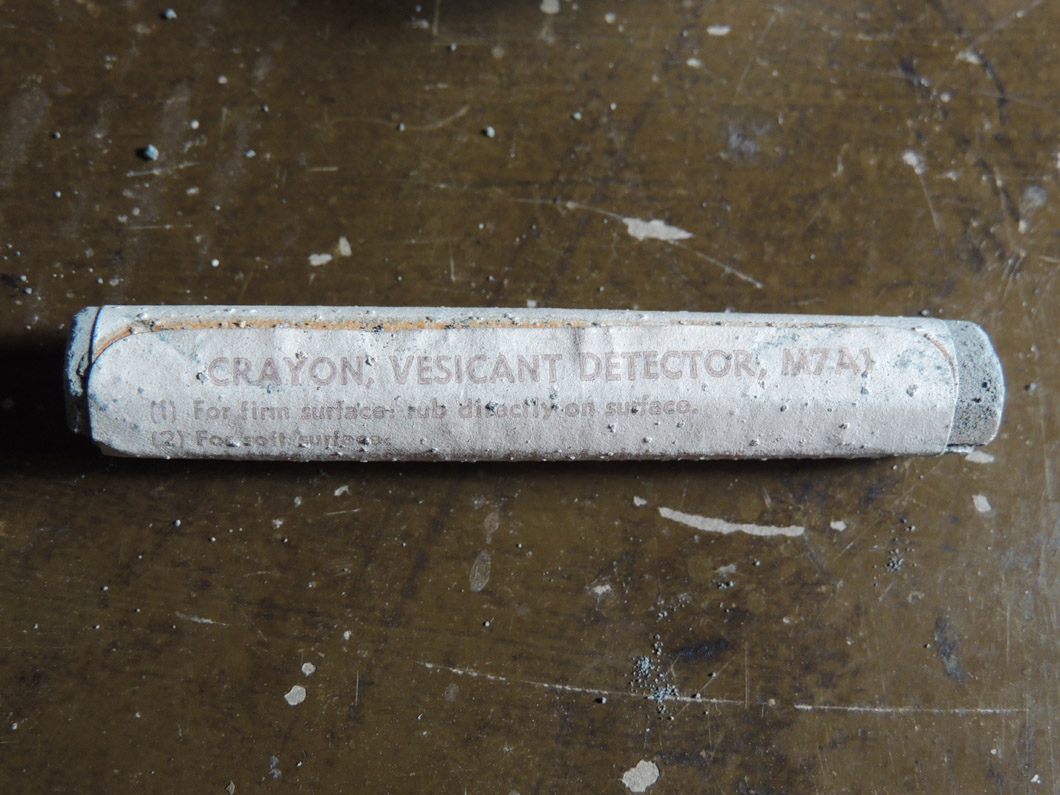
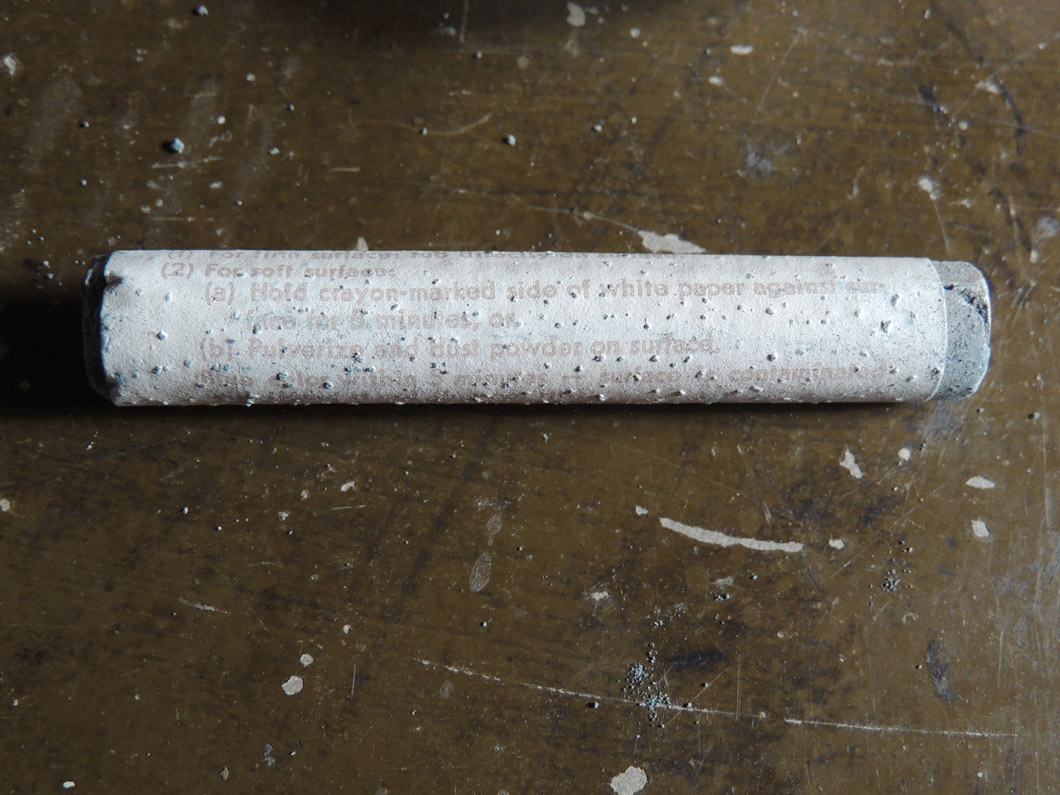
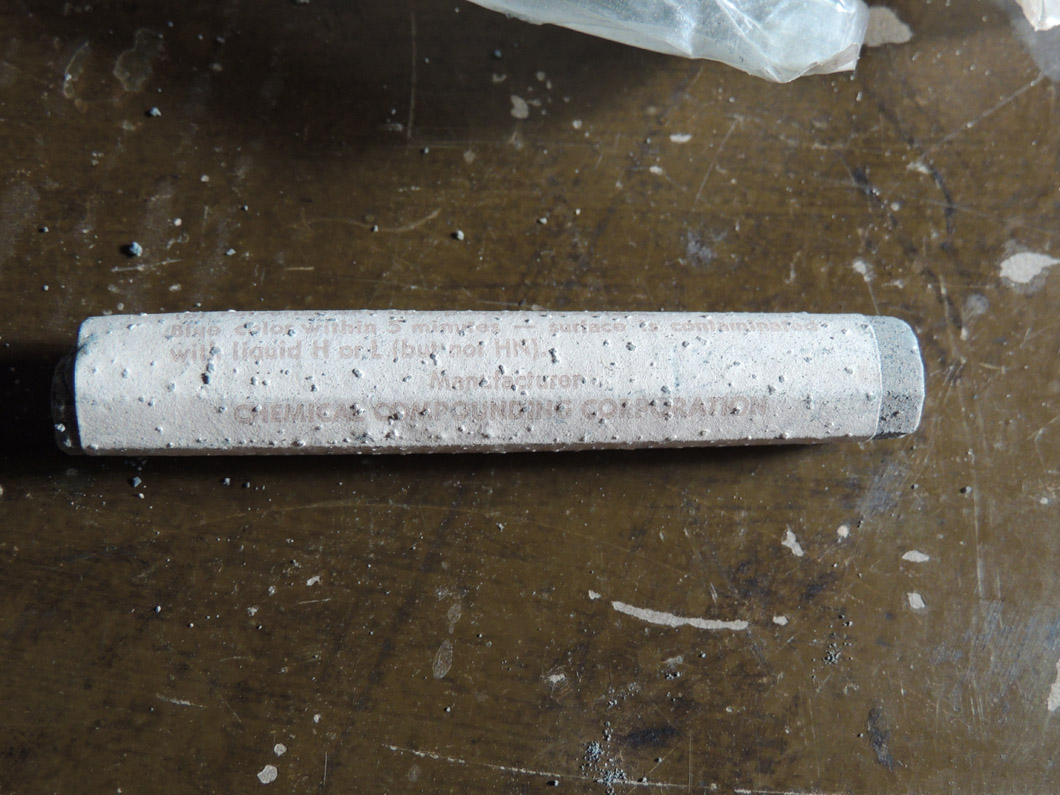
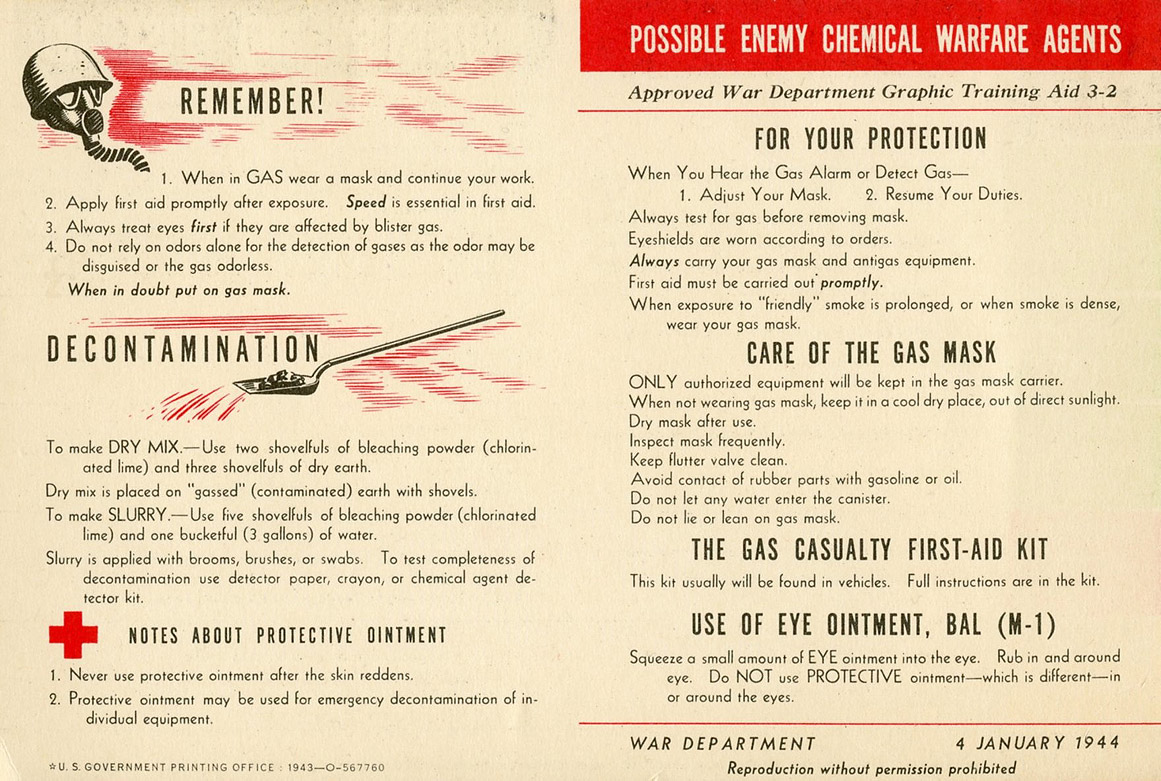
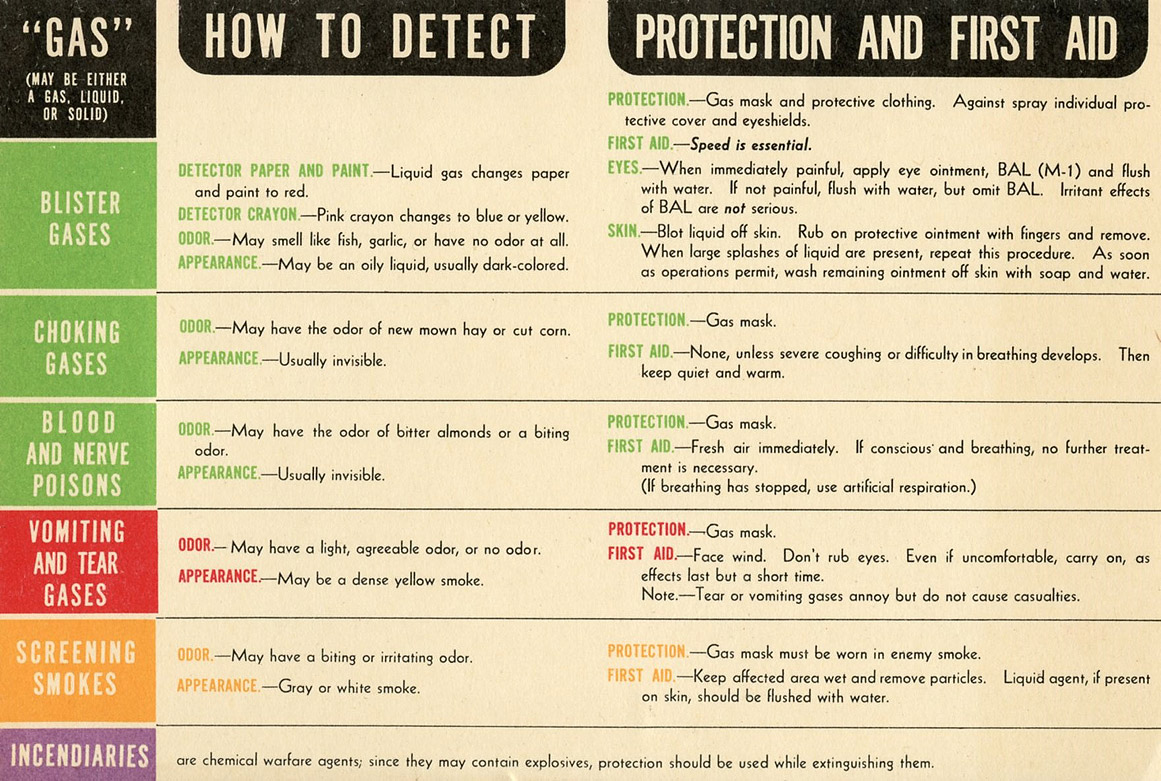
Methods of Using Atomic Energy
For Military Purposes
Under the Auspices of the
United States Government
1940-1945'
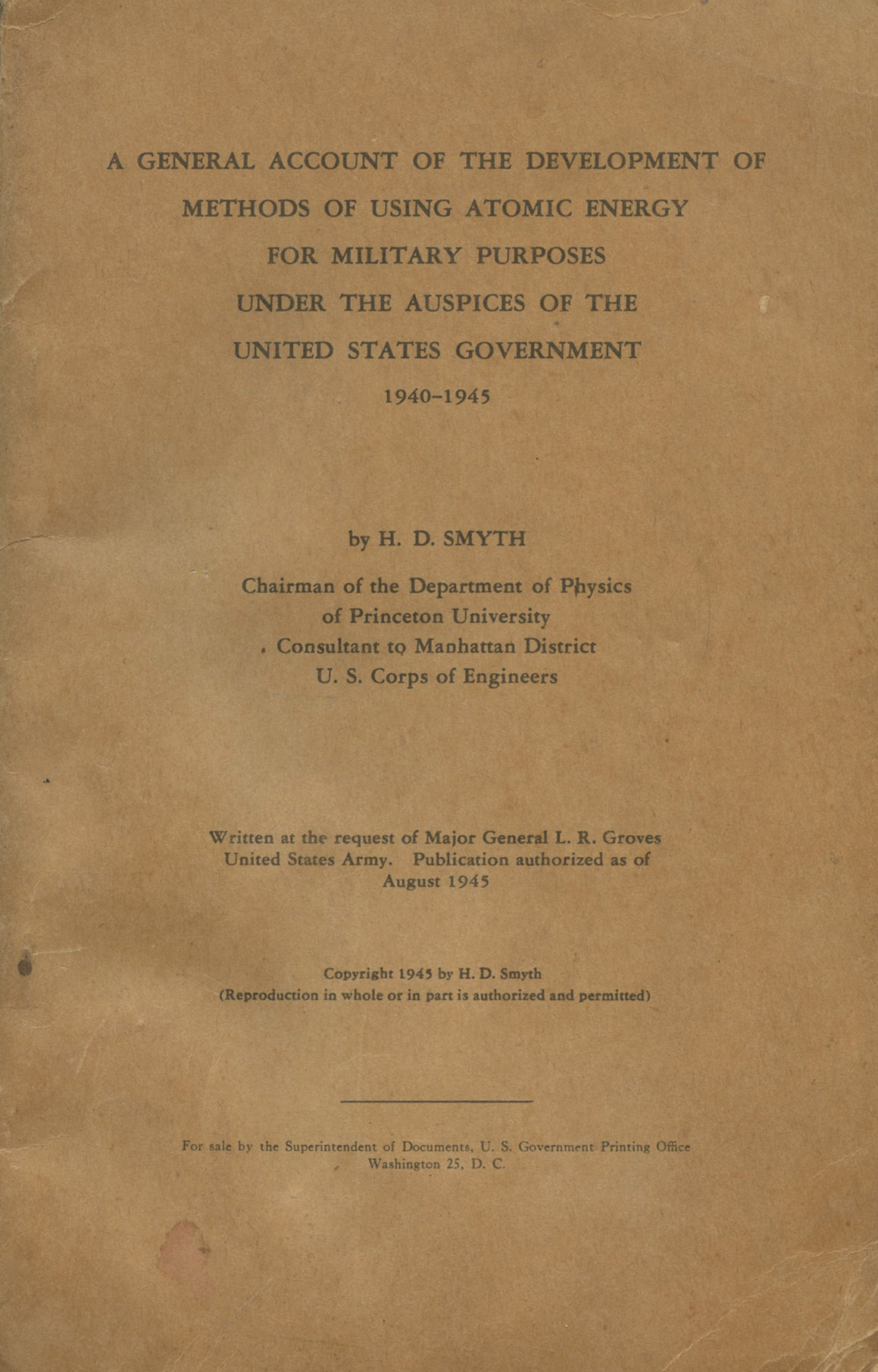
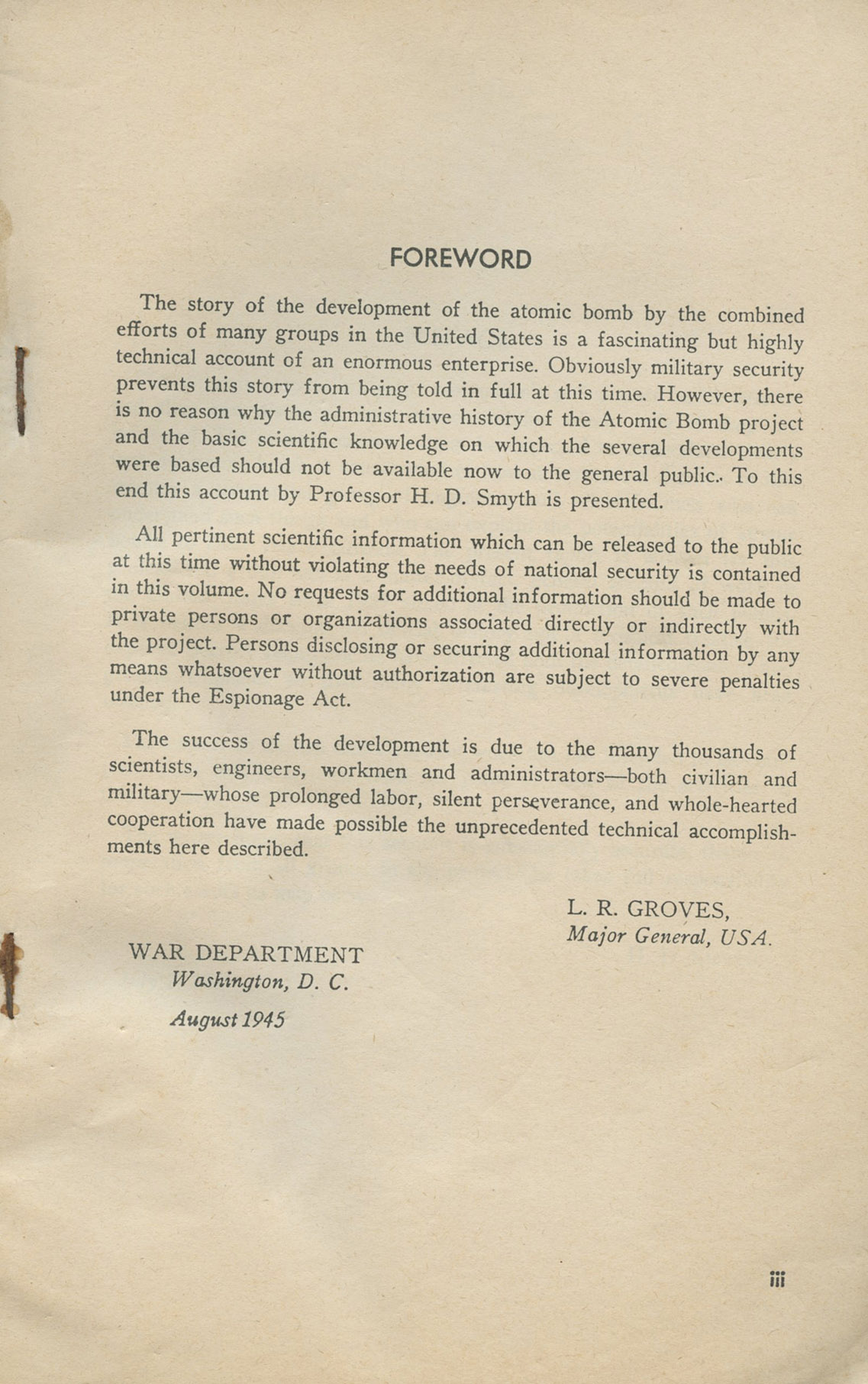
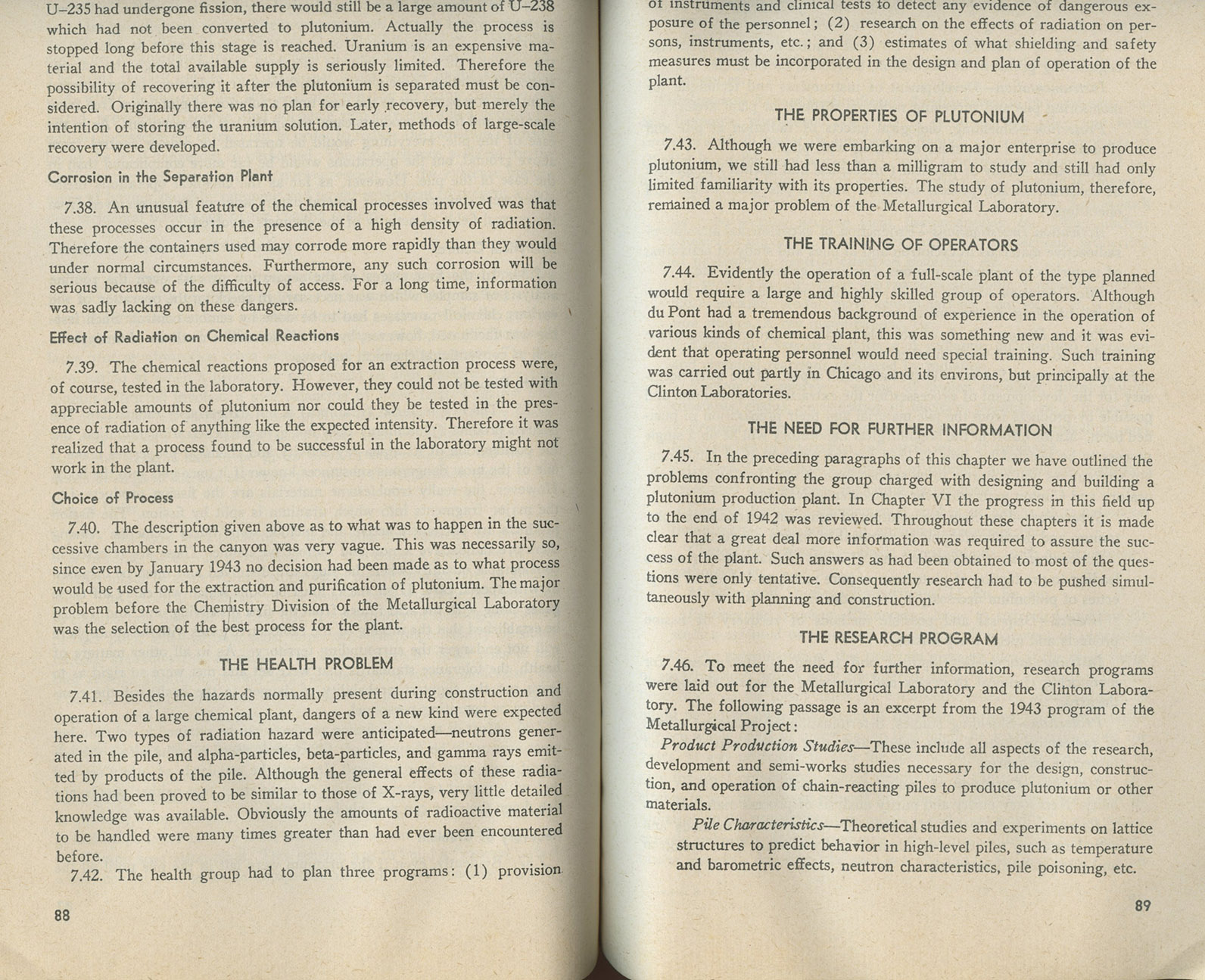
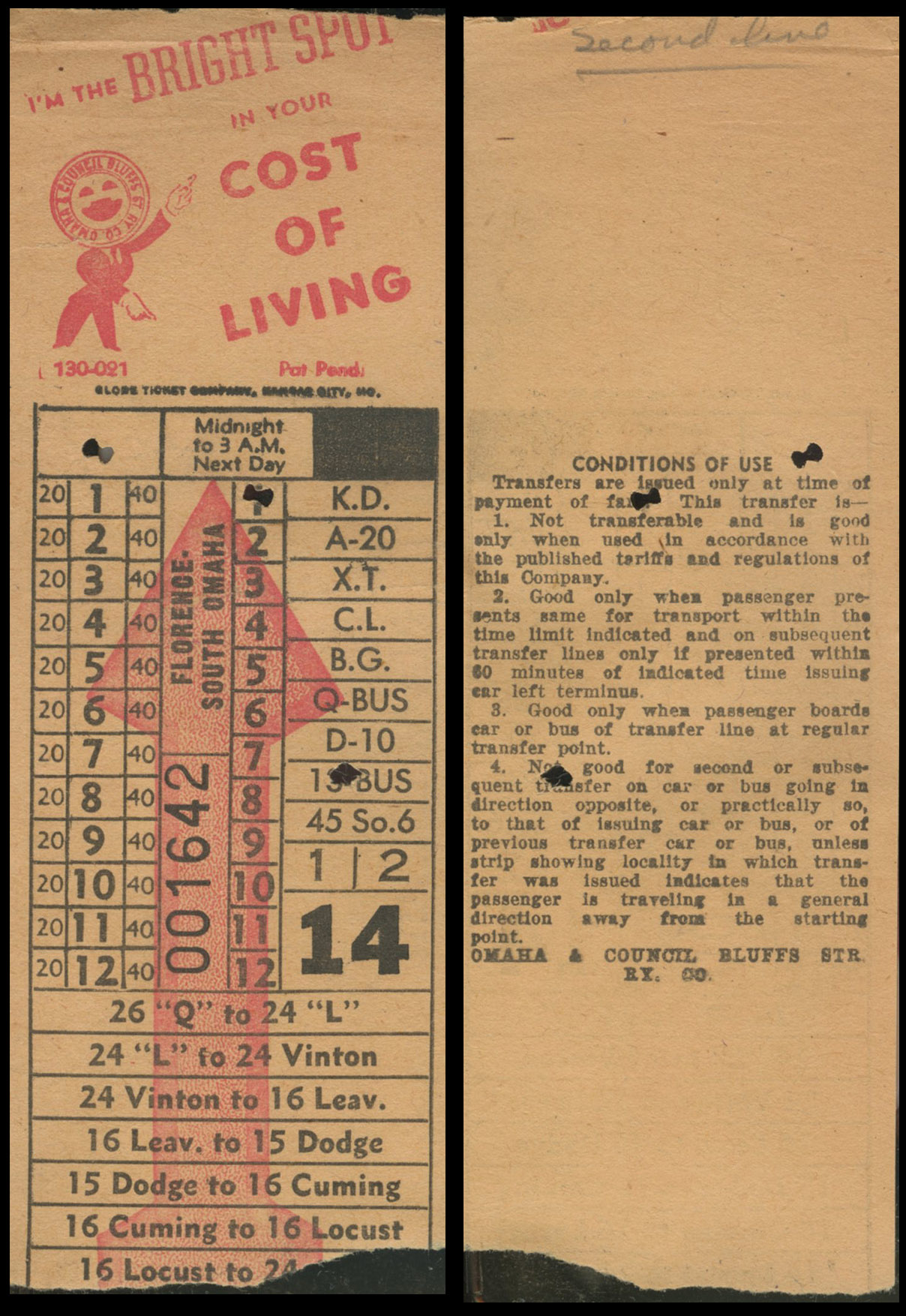
-|-Back to Trash and Treasure Page (1)
-|-On to Trash and Treasure Page (42)
-|-
-|-Back to Review List -|-
